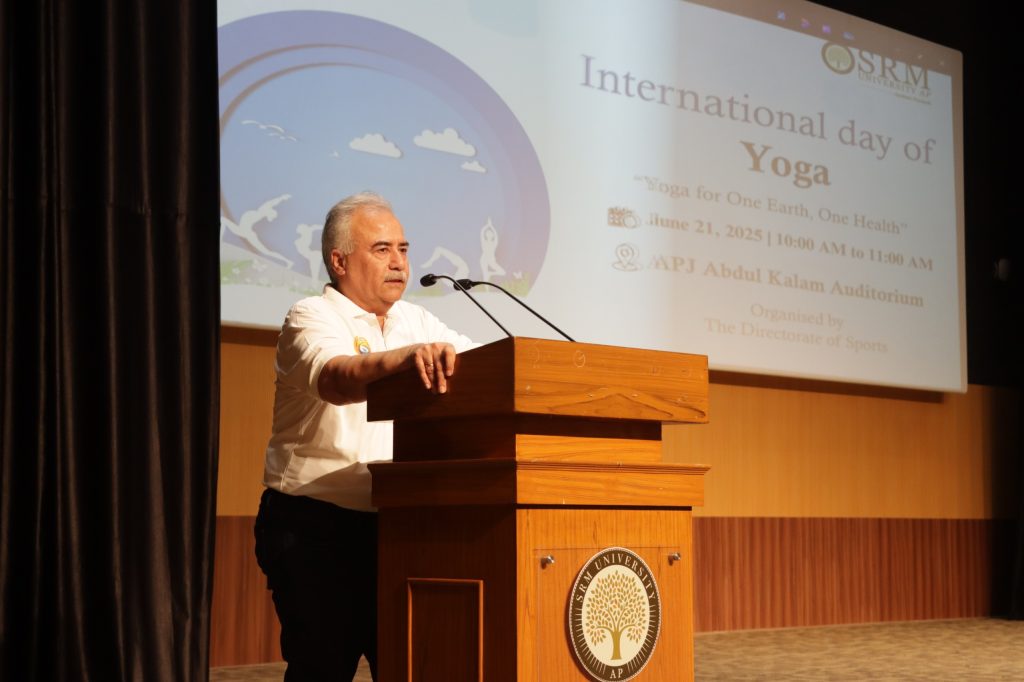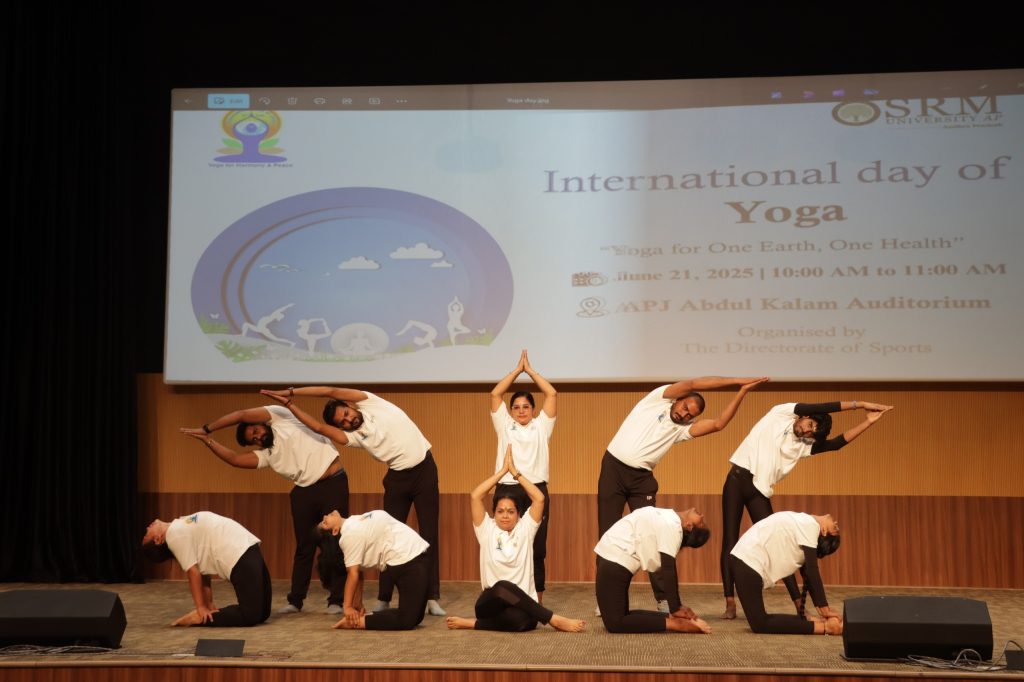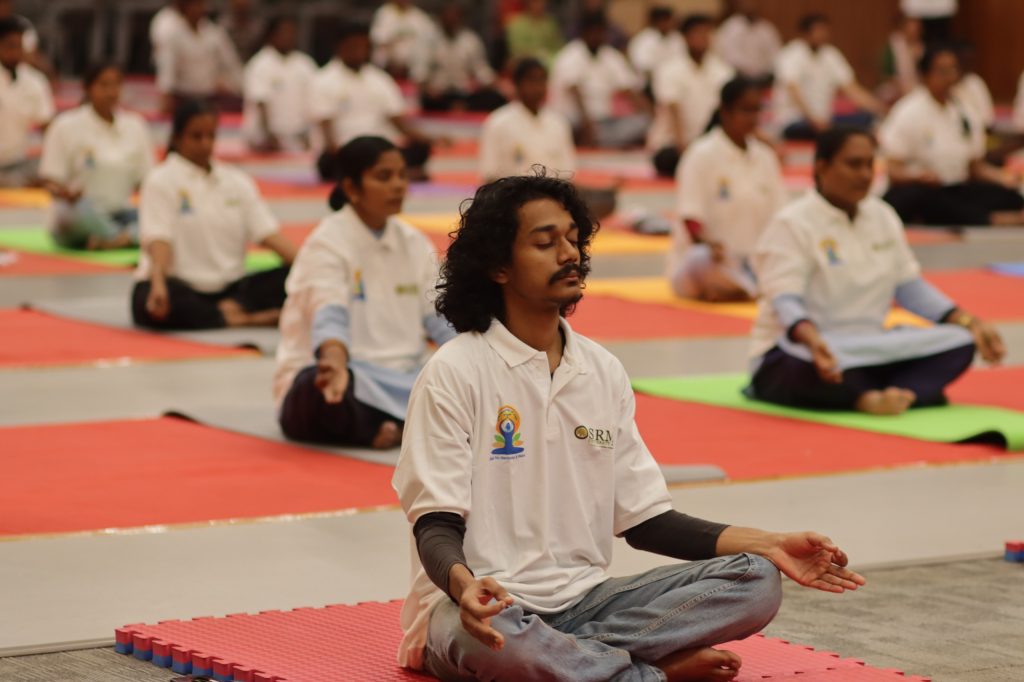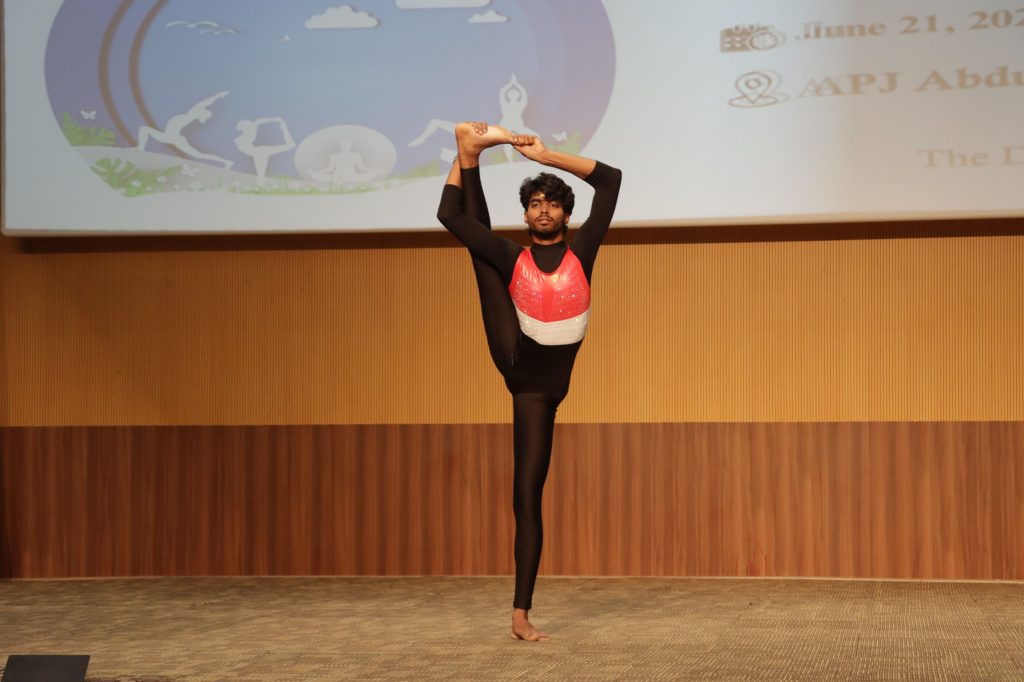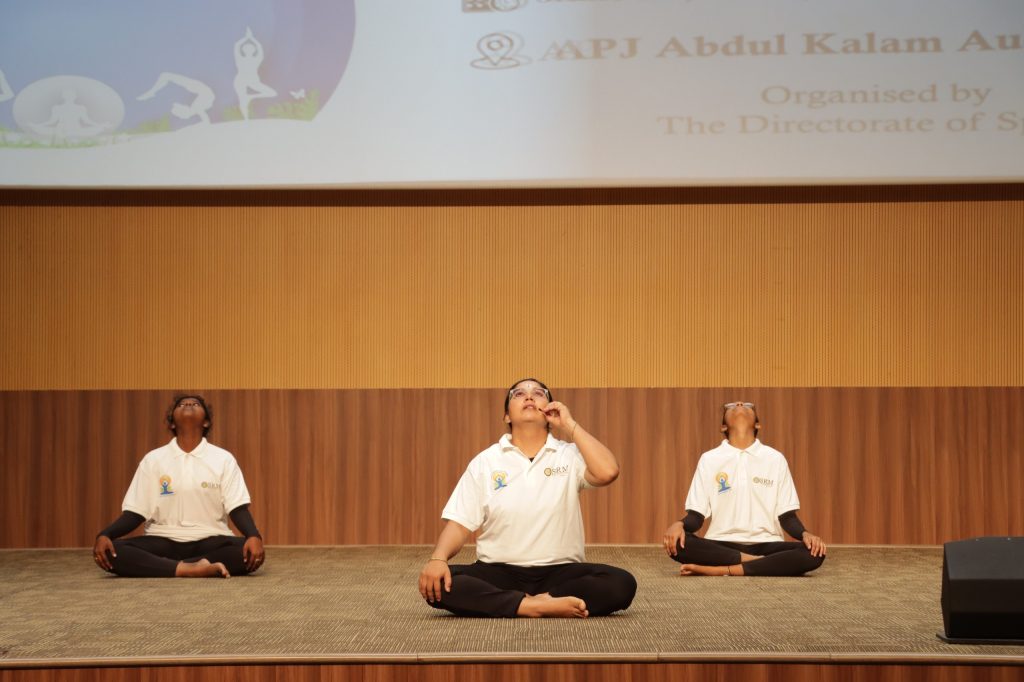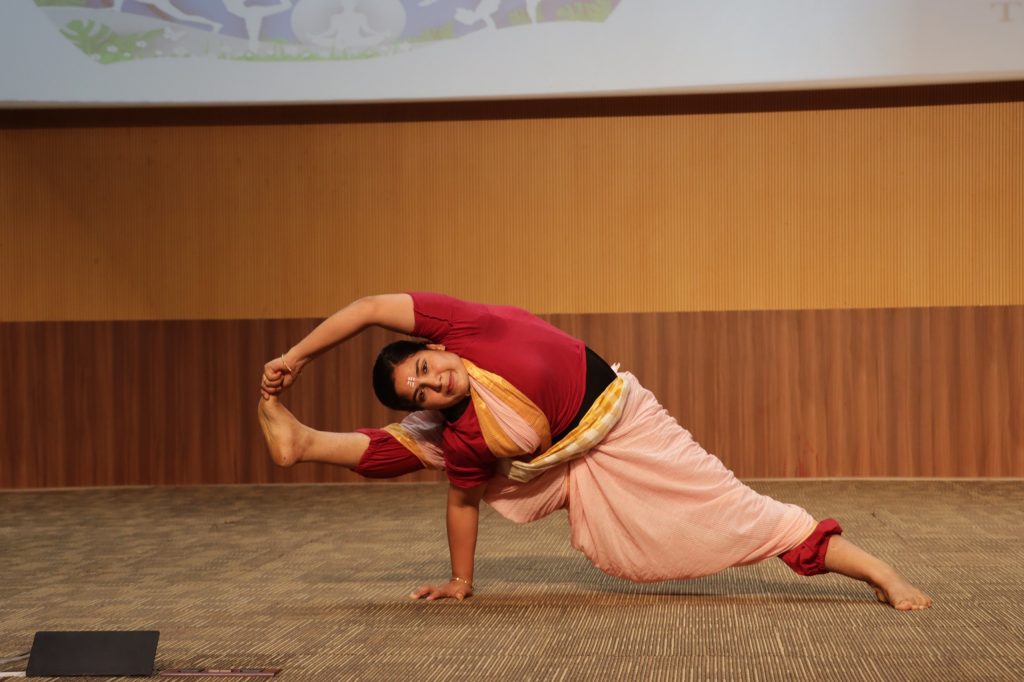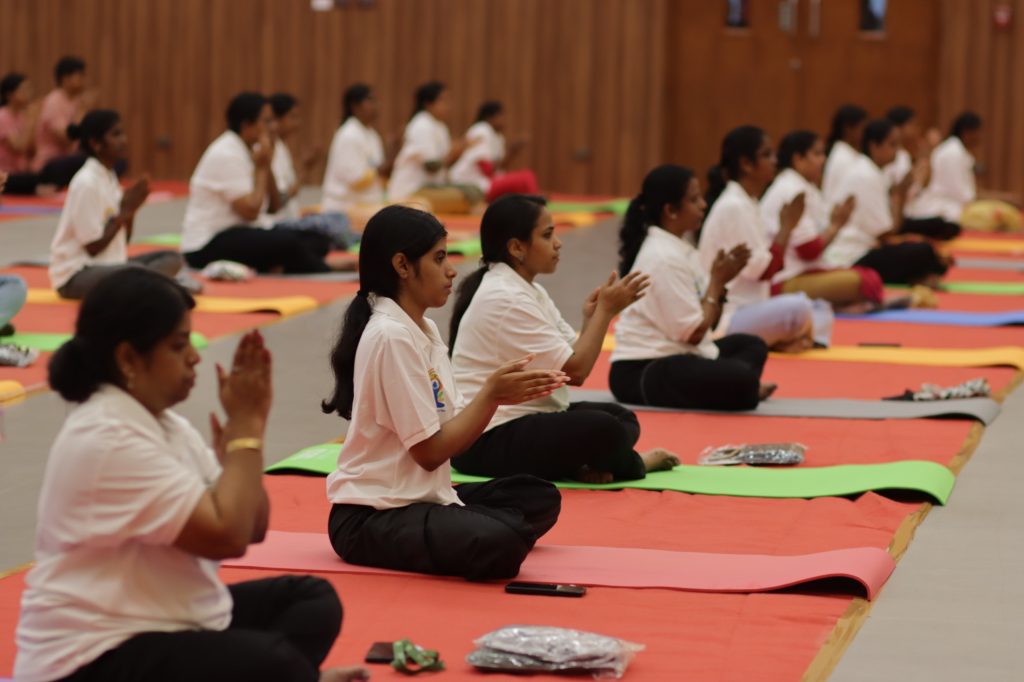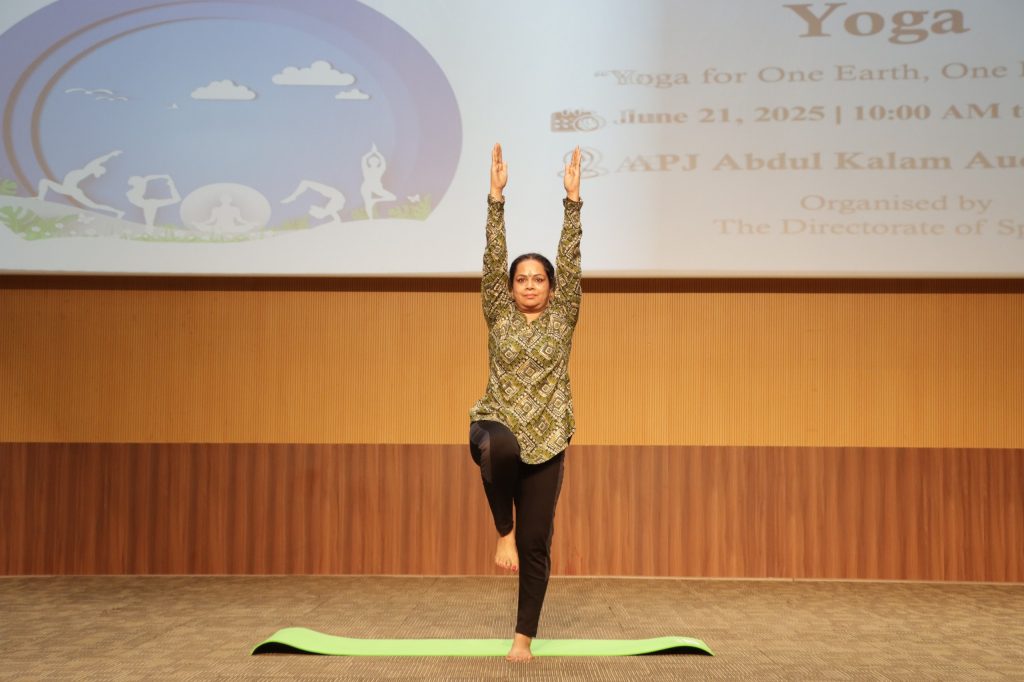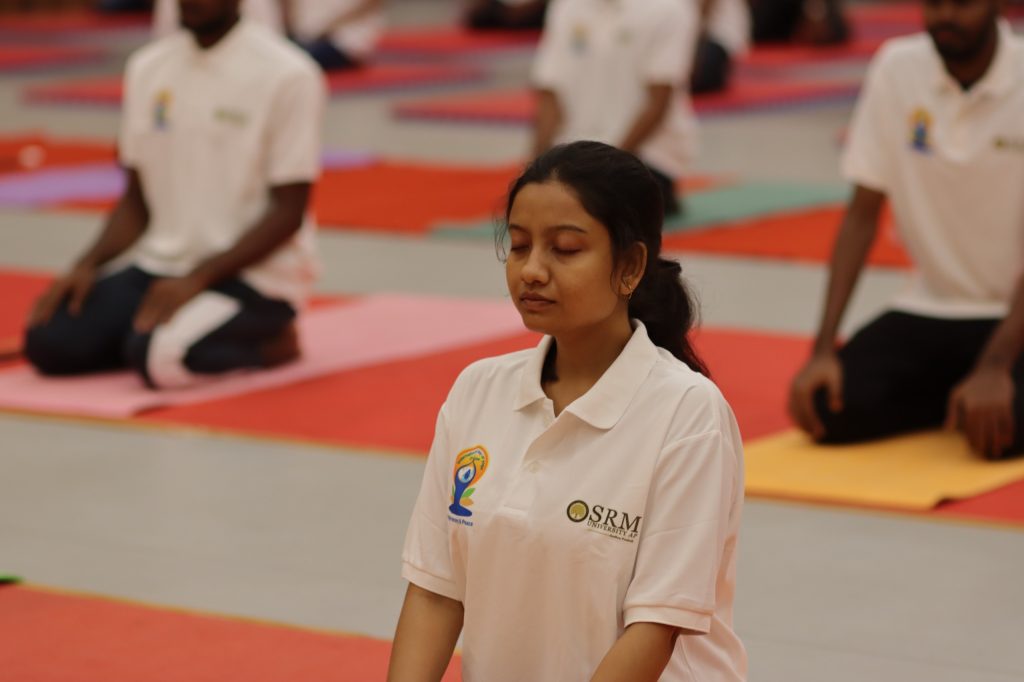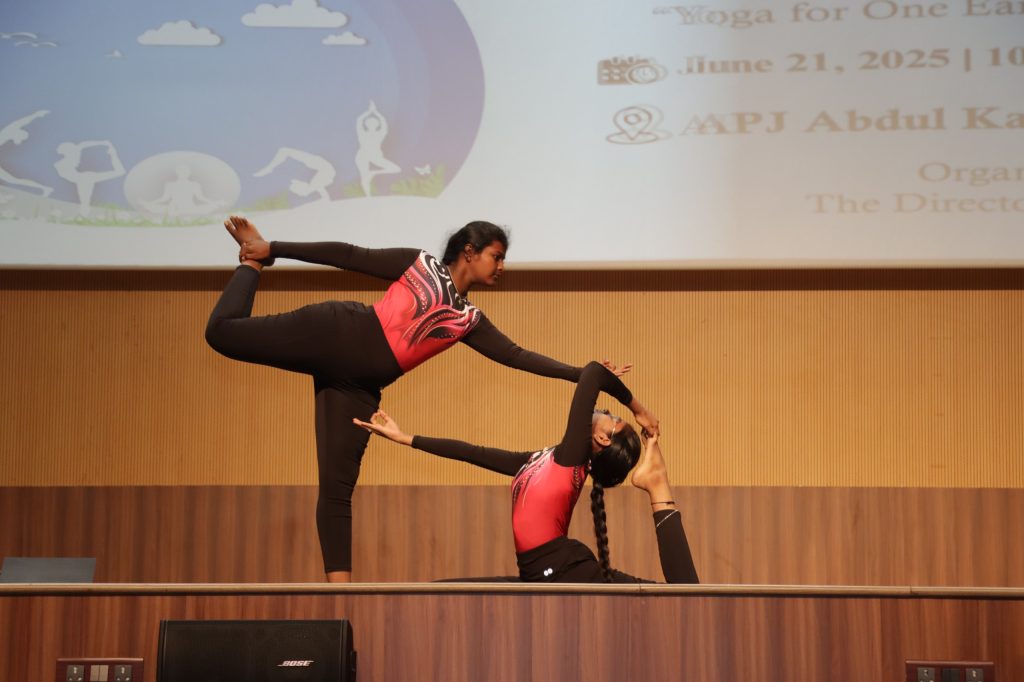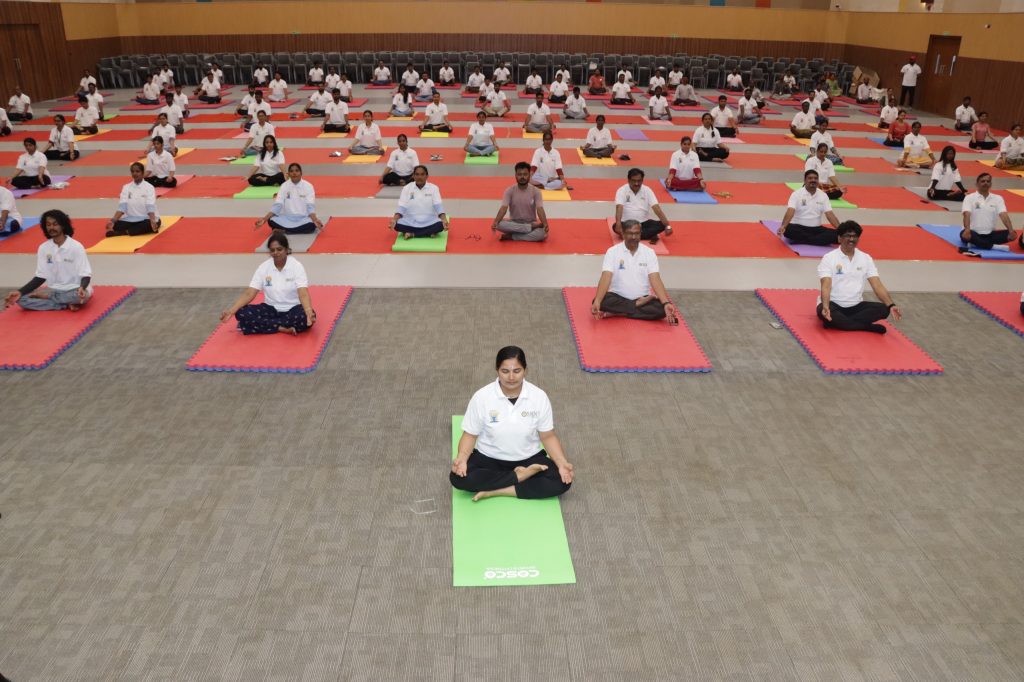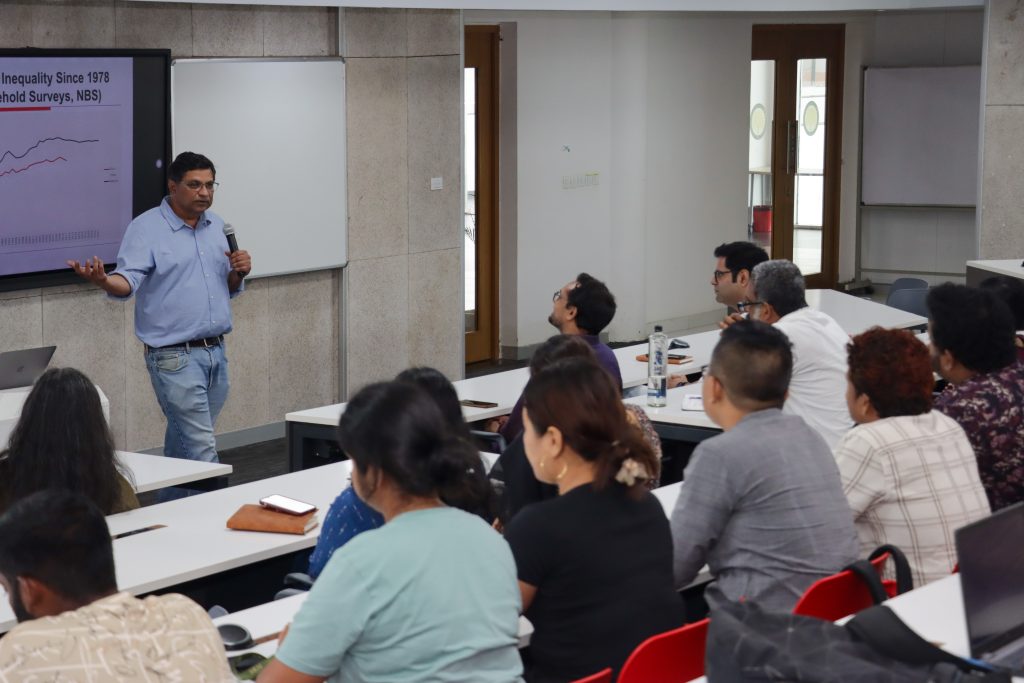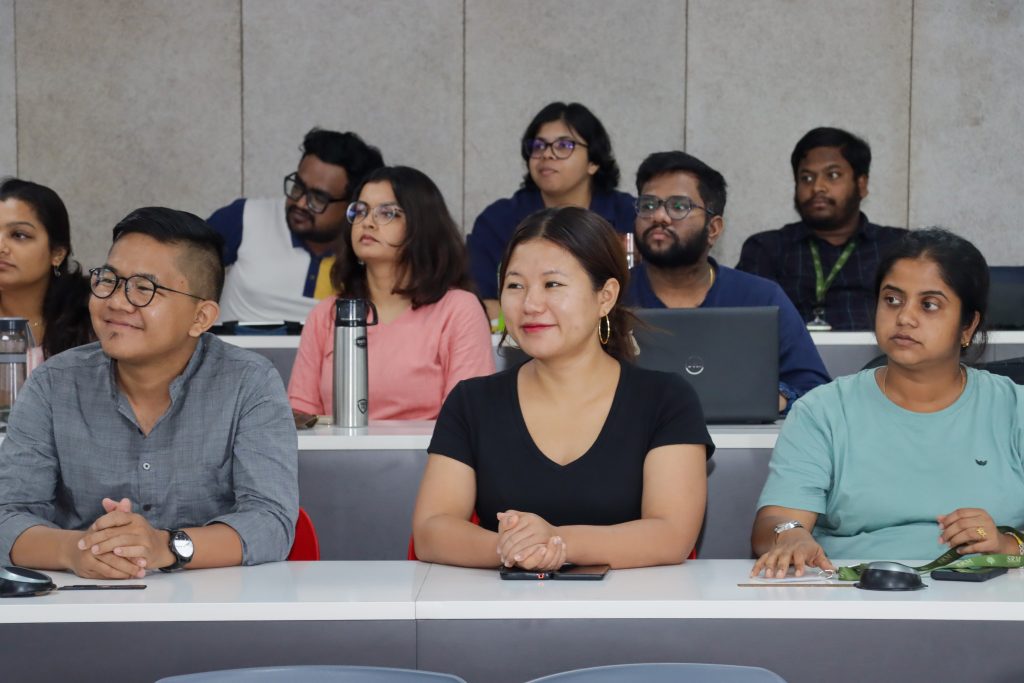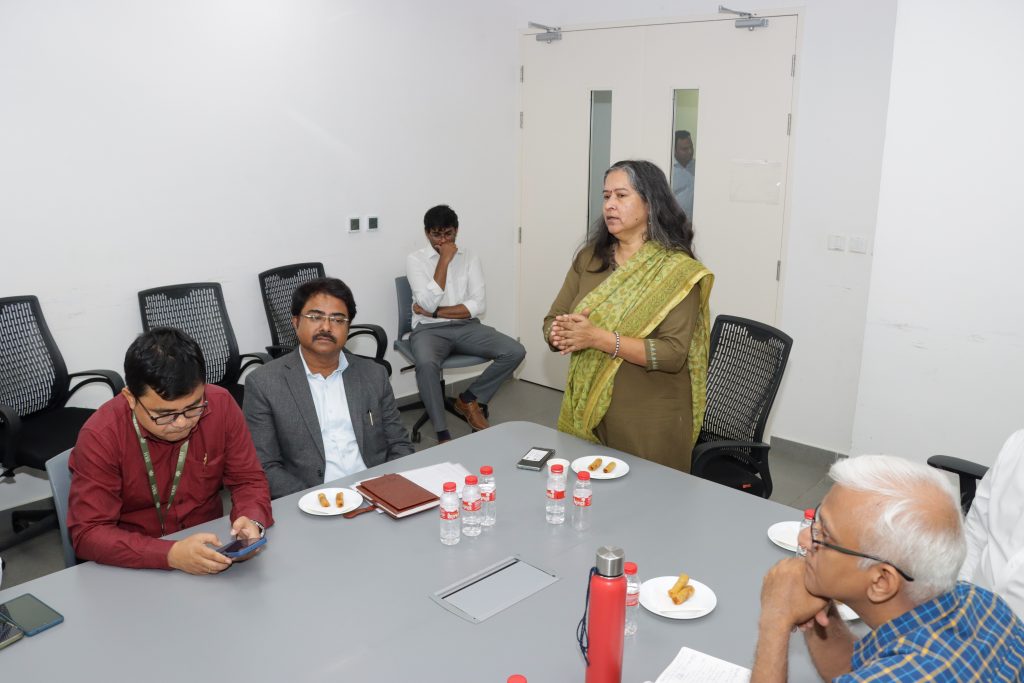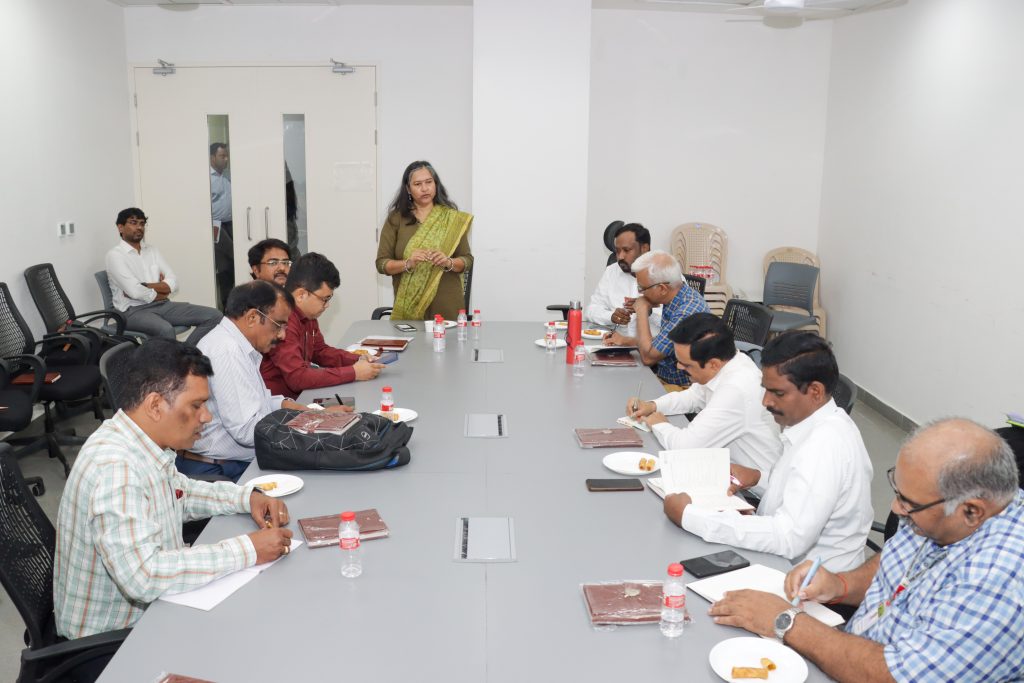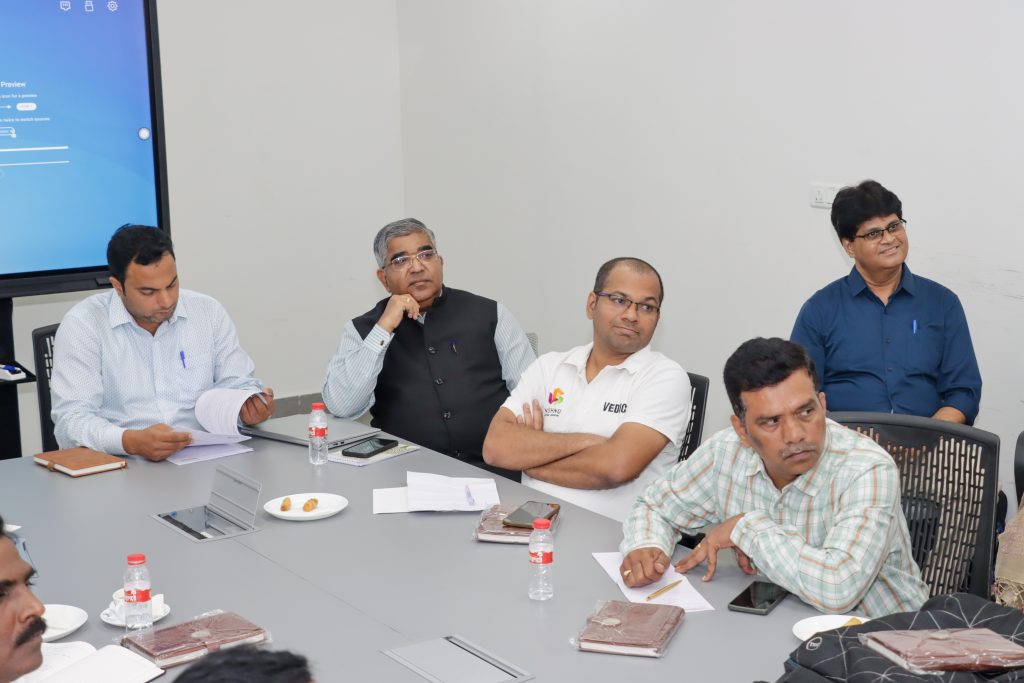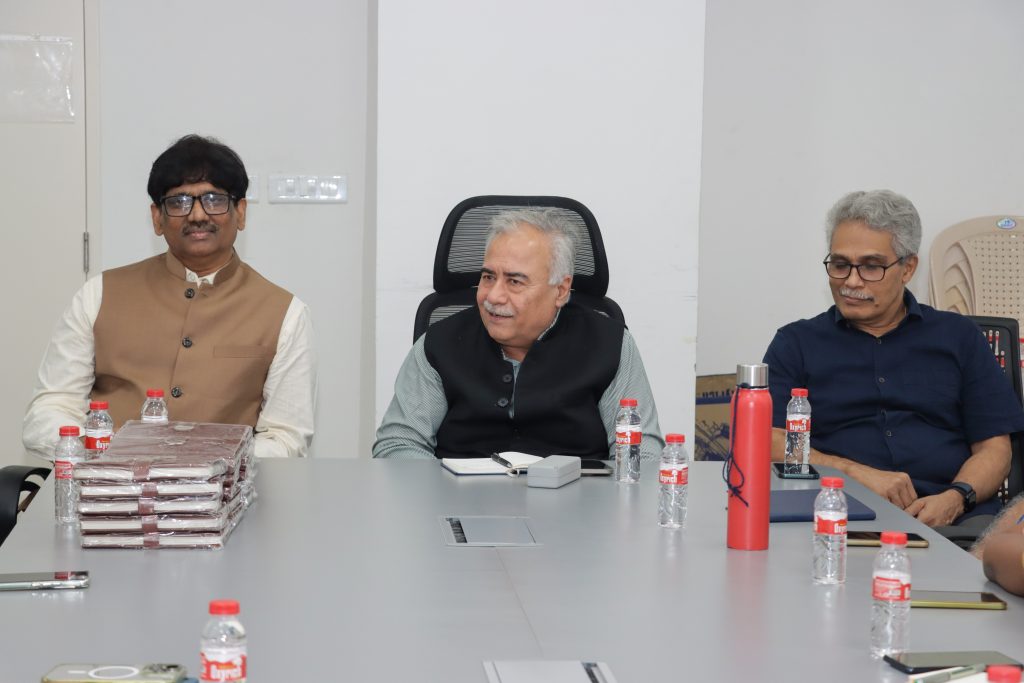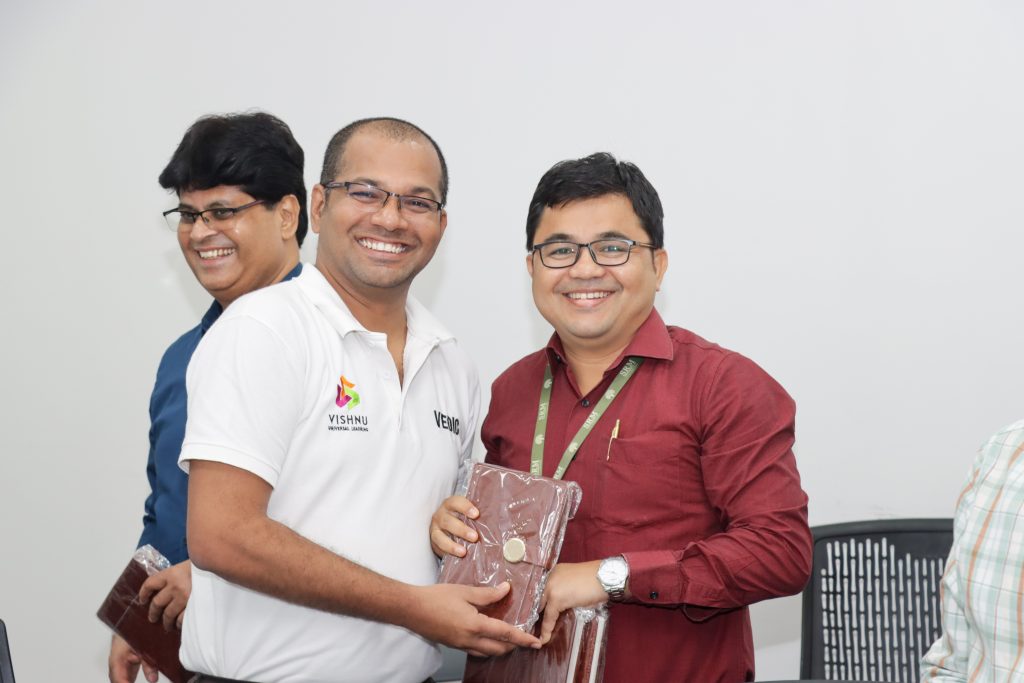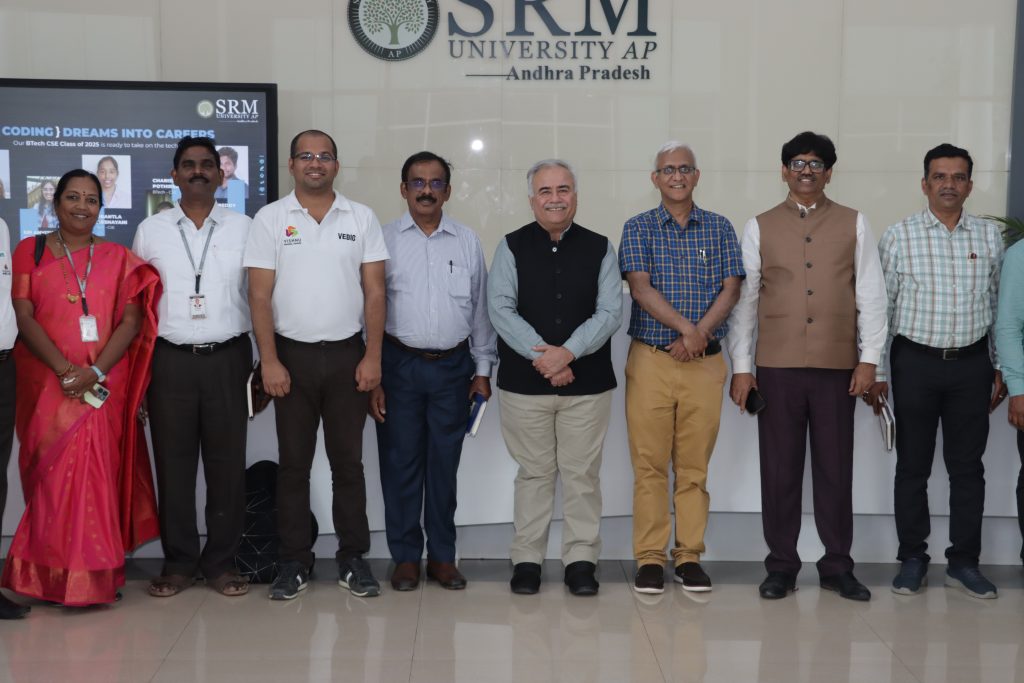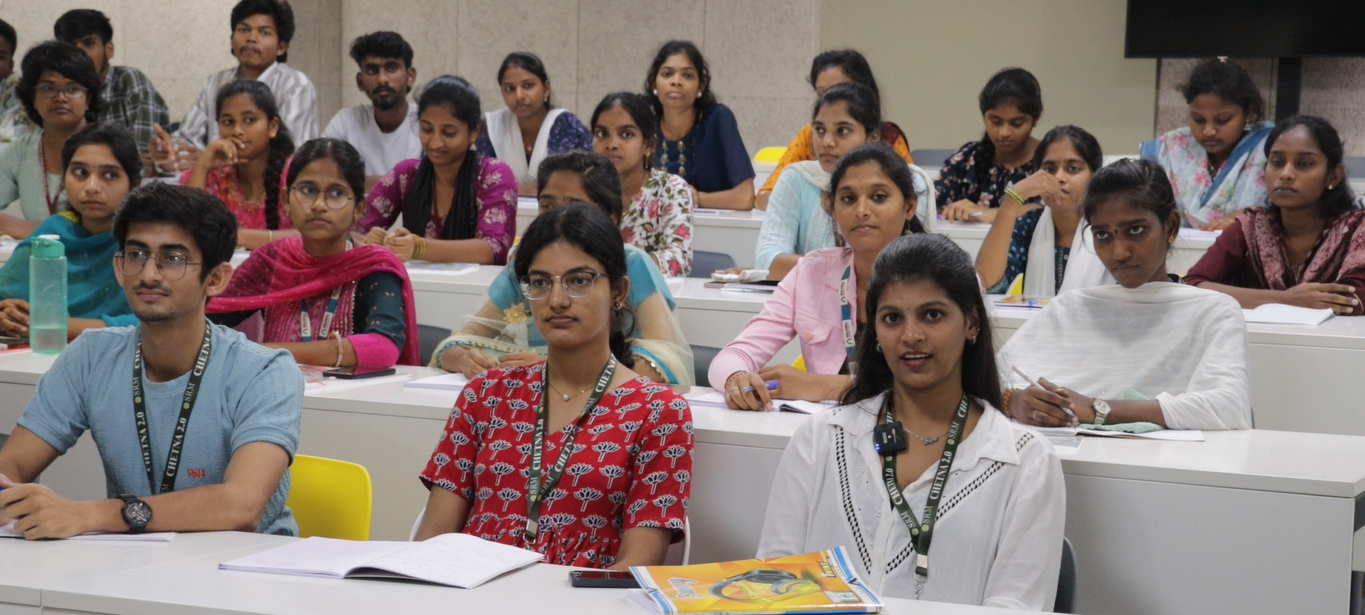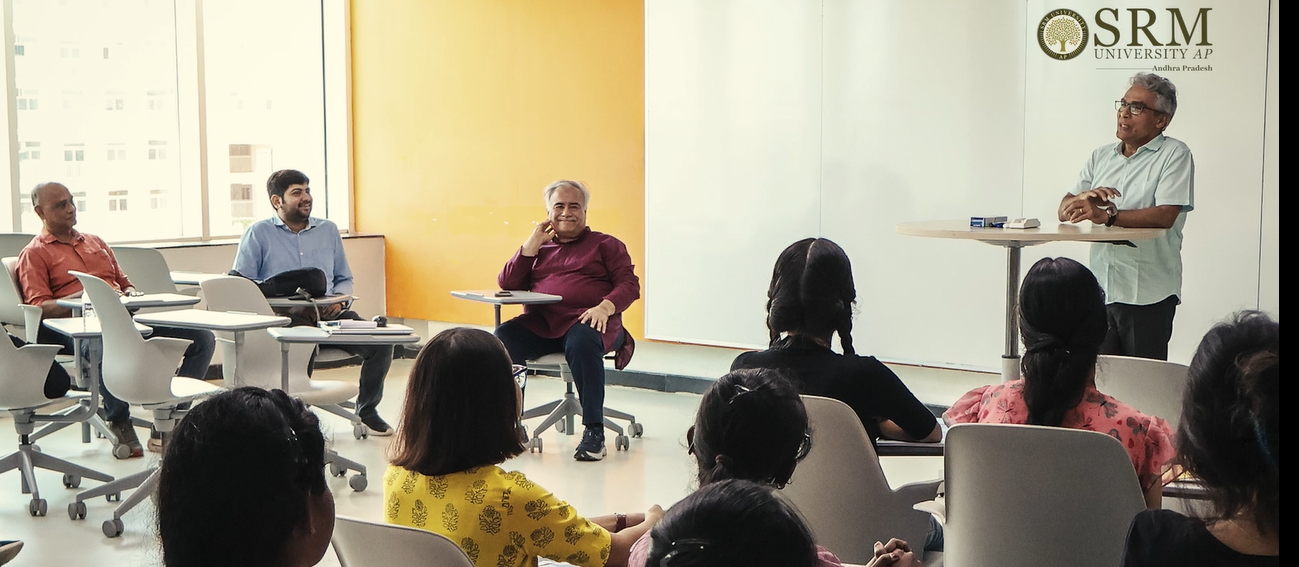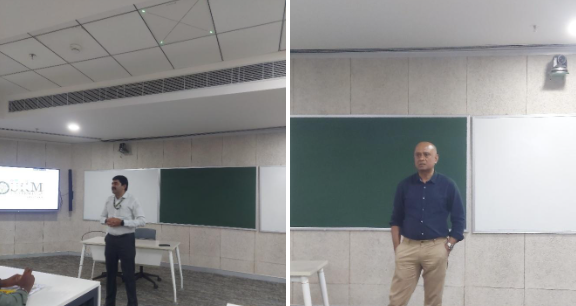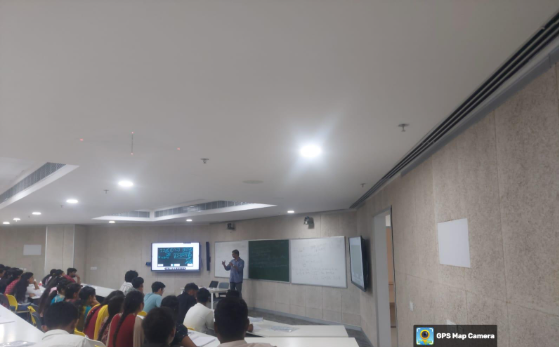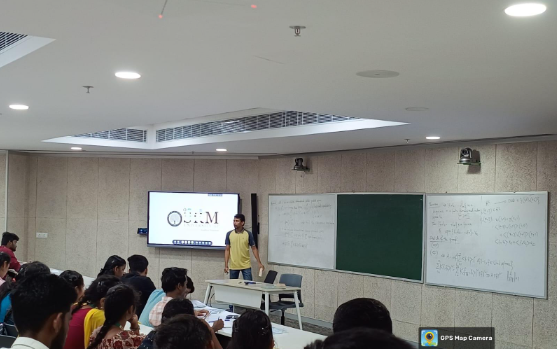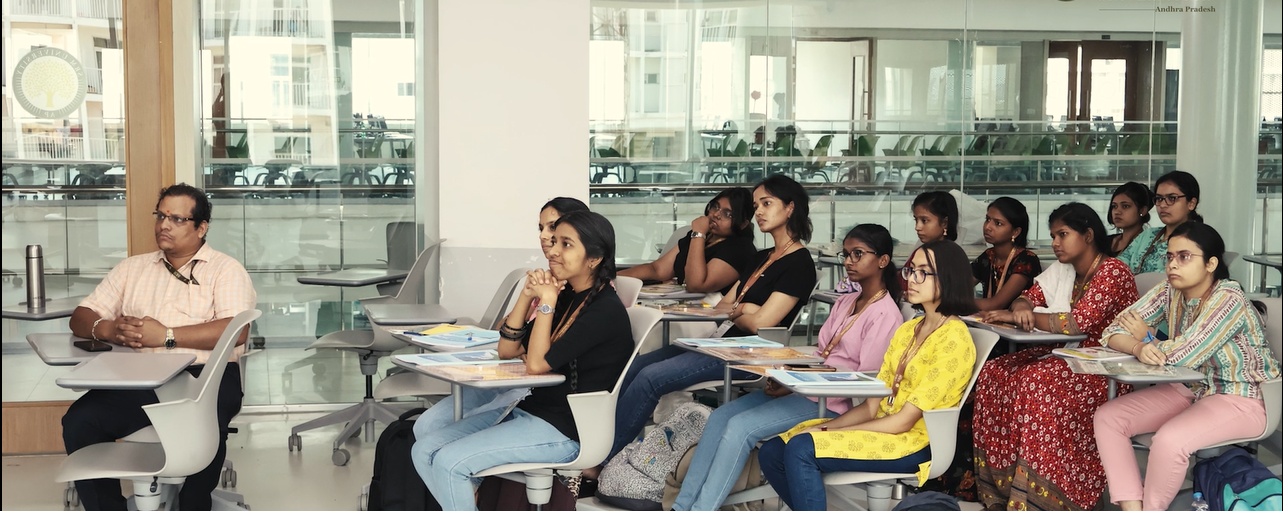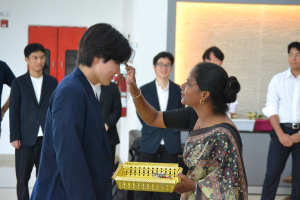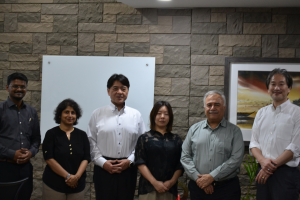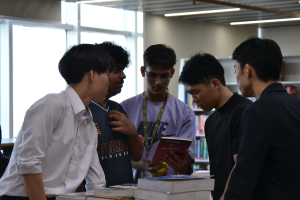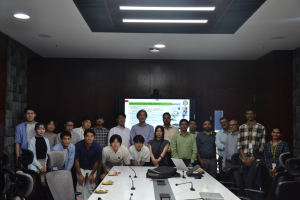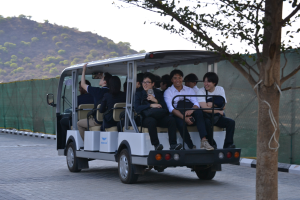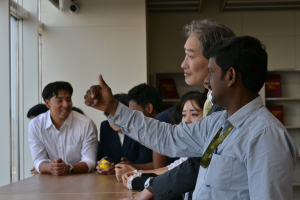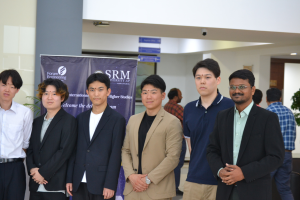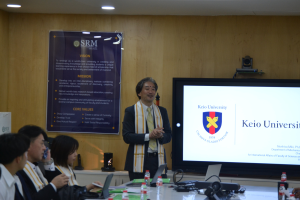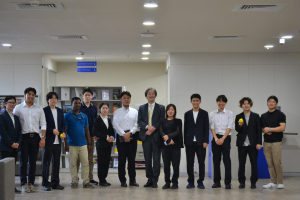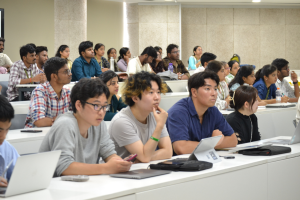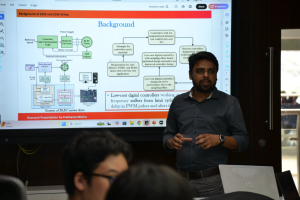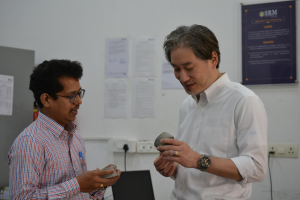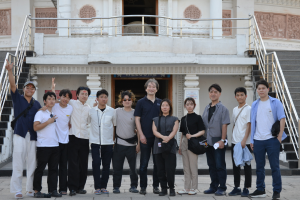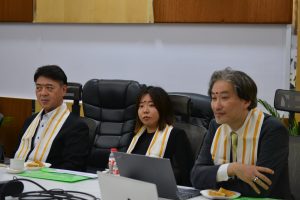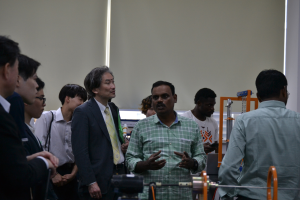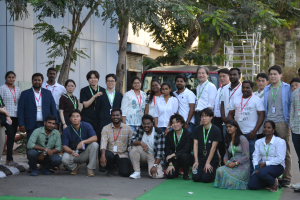SRM-AP All News
ALL News
- Digestate Valorisation through Green Chemistry Technology June 23, 2025
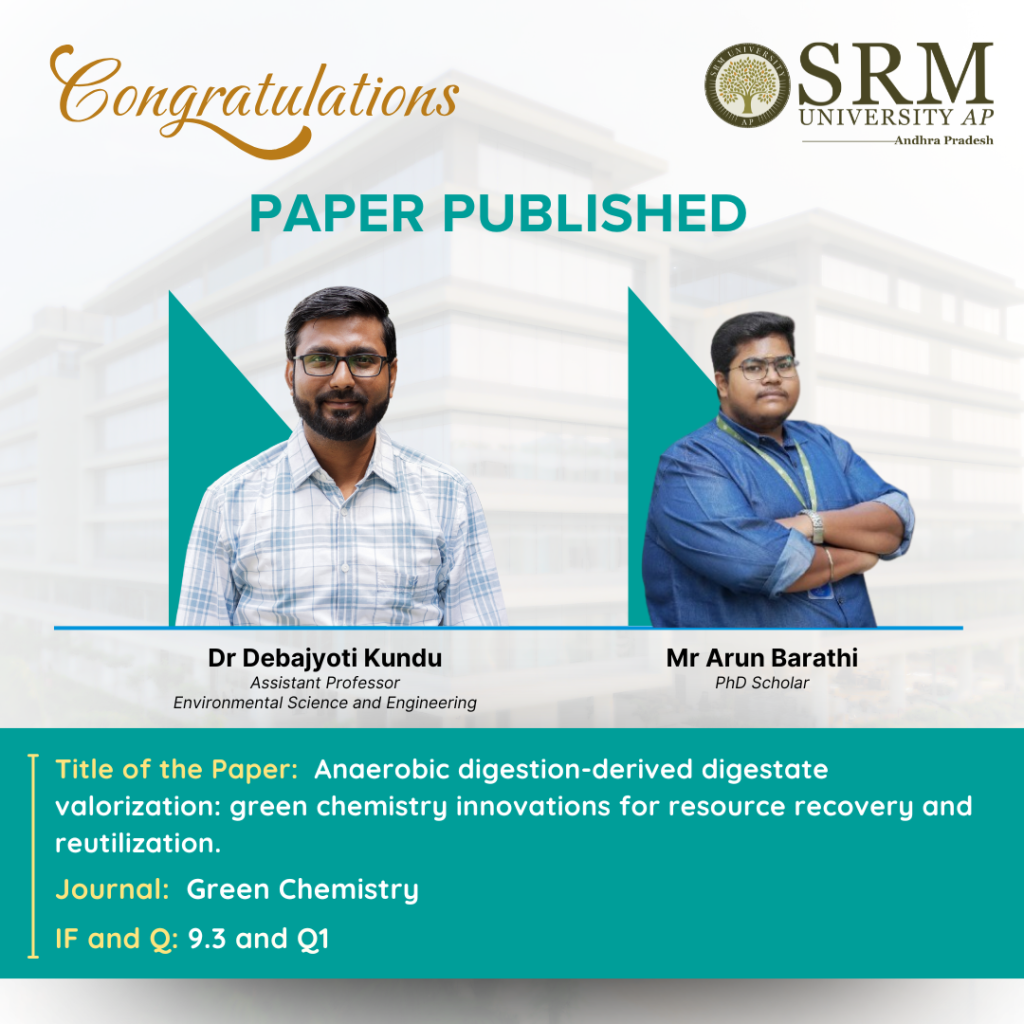
The proactive approach of Green Chemistry is driven by the cardinal rule of prevention rather than remediation of pollution. Analysing various eco-friendly ways to reduce waste, improve recycling, and help industries and farmers benefit from organic waste, Dr Debajyoti Kundu, Assistant Professor from the Department of Environmental Science and Engineering and his scholar Mr Arun Bharati, has published a paper titled “Anaerobic digestion-derived digestate valorization: Green chemistry innovations for resource recovery and reutilization”, in the Q1 journal Green Chemistry having an impact factor of 9.3.
Their research looked into eco-friendly ways to turn the bi-product of anaerobic digestion – digestate into valuable products like organic fertilisers, chemicals, and even ingredients for making plastics. The team also explores how to recover nutrients like nitrogen and phosphorus from it.
Abstract
Anaerobic digestion (AD) is a sustainable technology that converts organic waste into biogas, producing digestate as a by-product. This review investigates innovative strategies for digestate valorization through green chemistry approaches, emphasising its transformation into valuable resources such as biochar, bio-based polymers, and high-value chemicals like volatile fatty acids and humic substances. Additionally, the study explores nutrient recovery techniques like ammonia stripping and struvite precipitation. Through techno-economic and life cycle assessment perspectives, the work promotes digestate reutilization within a circular bioeconomy to enhance environmental sustainability and support net-zero goals.
Practical Implementation/ Social Implications of the Research
The research offers practical solutions for managing the large volumes of digestate generated in biogas plants. By converting digestate into biofertilisers, biochar, and industrial chemicals, we reduce the environmental burden of waste disposal and create economic opportunities for rural and urban stakeholders. These innovations support sustainable agriculture, reduce reliance on synthetic fertilisers, and promote clean technology, aligning with national and global sustainability goals, including SDGs and the circular economy.
Collaborations
The study was collaborative between SRM University–AP, SRMIST, Vignan’s Foundation, University of North Bengal, University of Burdwan, CSIR–NEERI, Thapar Institute, and Virginia Tech (USA).
Future Research Plans
The research lab focuses on the eco-friendly valorization of diverse organic wastes using green chemistry and sustainable bioprocessing approaches. We aim to develop scalable technologies for producing high-value biochemicals, enzymes, and biomaterials. These efforts are aligned with key UN SDGs.
Link to the article
Continue reading →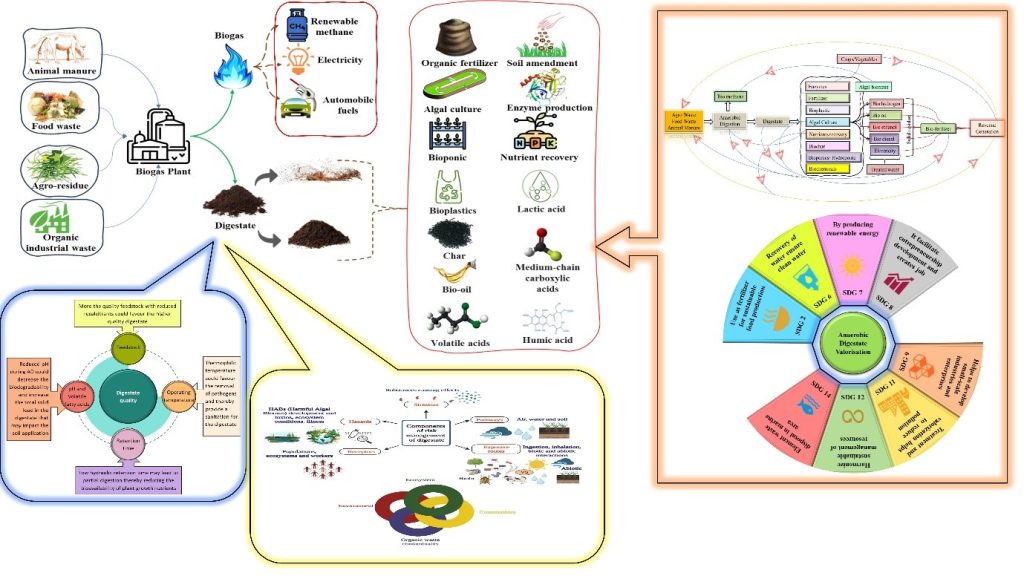
- GAA-NSFET Biosensor for High-Sensitivity Label-Free Detection June 23, 2025
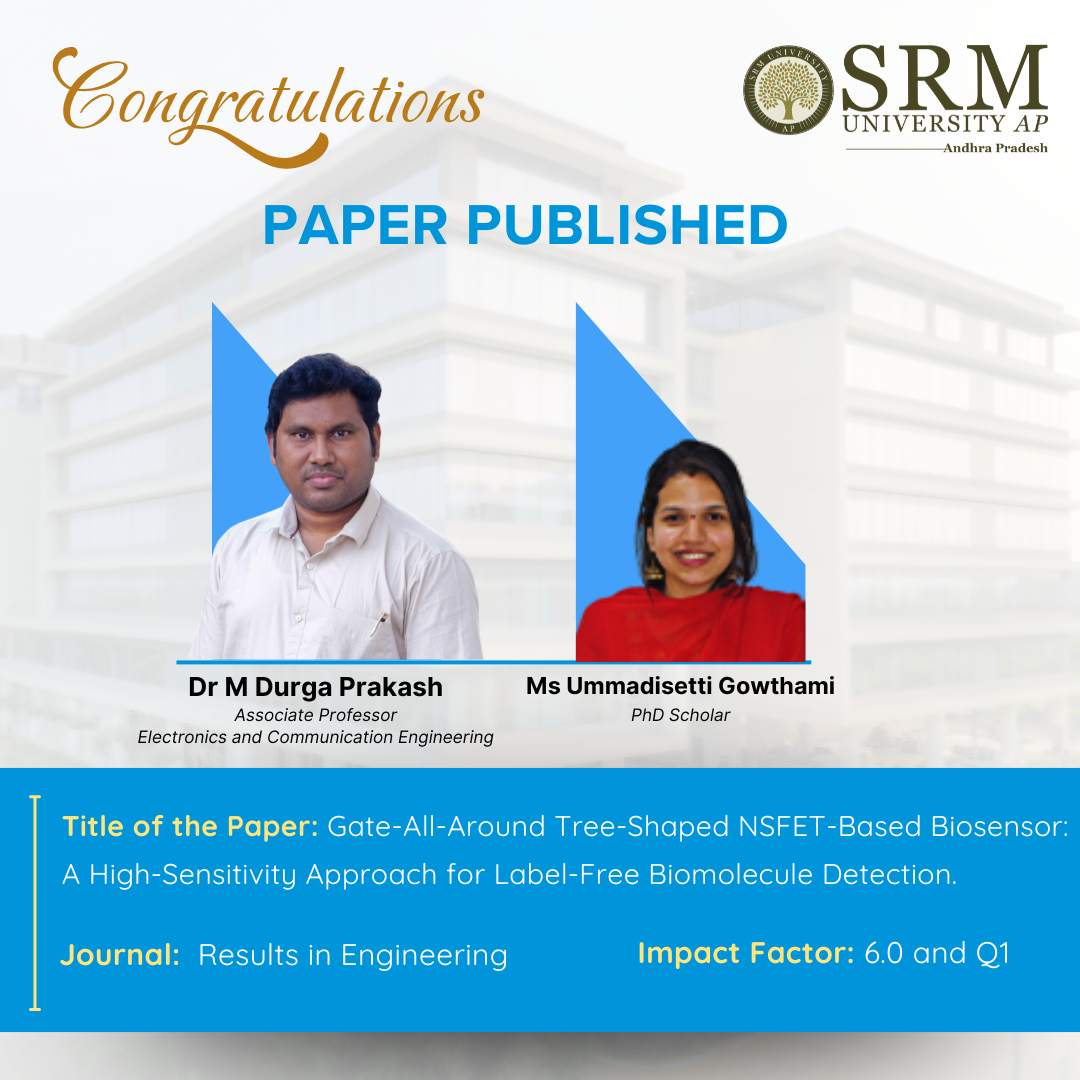 A cutting-edge research paper titled “Gate-All-Around Tree-Shaped NSFET-Based Biosensor: A High-Sensitivity Approach for Label-Free Biomolecule Detection” led by Dr M Durga Prakash, Associate Professor in the Department of Electronics and Communication Engineering, and Ms U Gowthami, PhD Scholar, has been published in the prestigious Q1 journal “Results in Engineering” with an Impact Factor of 6.0.
A cutting-edge research paper titled “Gate-All-Around Tree-Shaped NSFET-Based Biosensor: A High-Sensitivity Approach for Label-Free Biomolecule Detection” led by Dr M Durga Prakash, Associate Professor in the Department of Electronics and Communication Engineering, and Ms U Gowthami, PhD Scholar, has been published in the prestigious Q1 journal “Results in Engineering” with an Impact Factor of 6.0.This study presents a groundbreaking advancement in label-free biosensing technology by developing a highly sensitive biosensor. The device can detect extremely small biological molecules—such as proteins and DNA—without the need for traditional labeling methods that rely on fluorescent or radioactive tags. At the core of this innovation is a uniquely engineered transistor known as the Gate-All-Around Tree-Shaped Nanosheet Field-Effect Transistor (GAA-TS-NSFET). With its distinctive tree-like structure featuring multiple nanosheet branches, this advanced transistor design enables the detection of both charged and neutral biomolecules with exceptional sensitivity.
Abstract :
This paper proposes and investigates a label-free dielectrically modulated biosensor employing a Gate All Around Tree-Shaped Nanosheet Field Effect Transistor (GAA-TS-NSFET). The suggested biosensor’s excellent sensitivity to charged and neutral biomolecules is demonstrated by its electrical properties when evaluated under various biomolecule influences.A thorough sensitivity assessment is used to assess the sensing capabilities of the biosensors with various channel configurations. As indicators of biosensor sensitivity variation, we examine the subthreshold swing (SS), threshold voltage (Vth), and current switching ratio (Ion/Ioff). According to the findings, an additional channel acts as an interbridge, allowing the tree-shaped biosensor to attain the best sensitivity compared to biosensors based on NSFETs. Additionally, the article investigates how various spacer materials impact sensitivity. We also run several scenarios to see how different fill percentages affect the proposed biosensor’s sensitivity. The amount of biomolecules present determines its sensitivity. Finally, the suggested biosensor’s sensitivity is compared to other notable biosensing application efforts in a status map. The proposed GAA-TS-NSFET-based biosensor outperforms the previous works concerning Ion/Ioff sensitivity.
Practical Implementation of the Research
- Faster & Cheaper Diagnostics – Reduces reliance on expensive lab tests, making healthcare more accessible.
- Early Disease Detection – Could save lives by catching illnesses (like cancer or infections) at earlier stages.
- Less Invasive Testing – Since it doesn’t require labeling (no dyes or radioactive tags), it’s safer and simpler.
- Environmental Benefits – Could replace some chemical-based detection methods with electronic sensing, reducing waste.
Collaborations: School of Engineering, University of Warwick, Coventry CV4 7AL United Kingdom
Continue reading →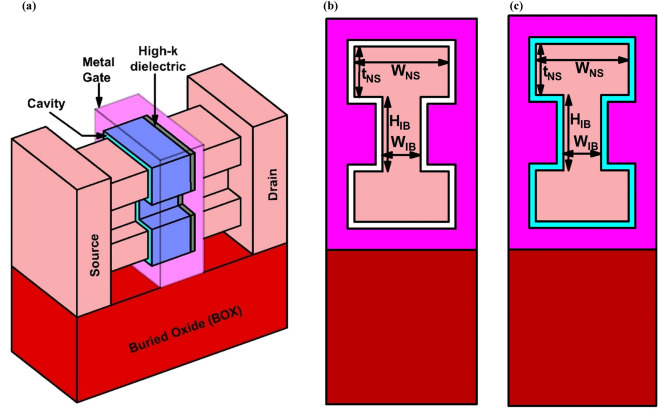
Fig. (a) 3-D view of GAATree-shaped NSFET-based biosensor; Transverse cross-sectional view of GAA Tree-shaped NSFET-based biosensor: (b) from source side and (c) from drain side.
- SRM University-AP Marks International Yoga Day with Community and Consciousness June 23, 2025
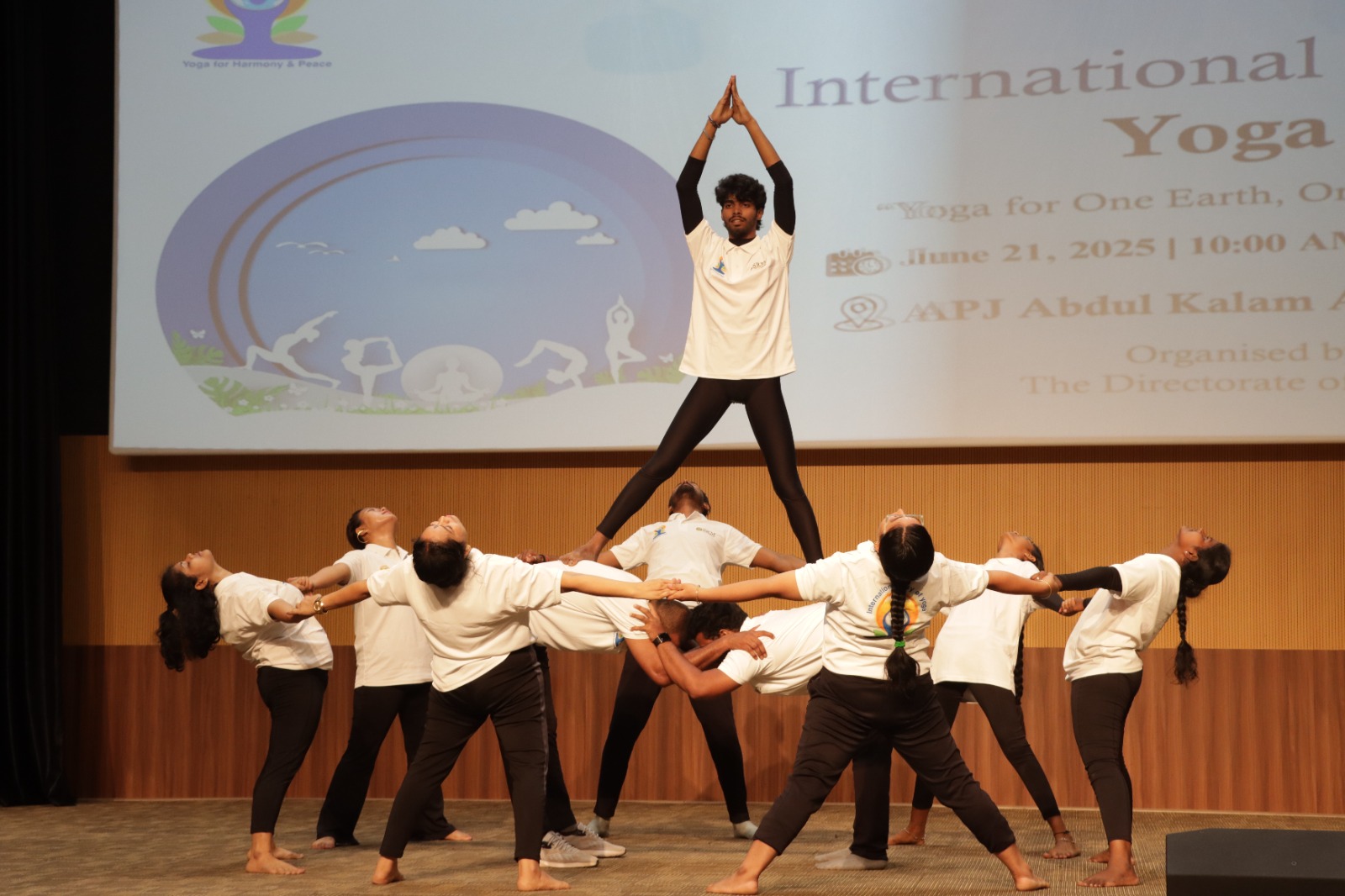 SRM University-AP, Amaravati, marked International Yoga Day on June 21 with a spirited celebration, as students, faculty, and staff united in a vibrant display of mindfulness and harmony. The event saw the participation of around 200 attendees and featured diverse yoga styles including fusion, micro, artistic, and group yoga sessions.
SRM University-AP, Amaravati, marked International Yoga Day on June 21 with a spirited celebration, as students, faculty, and staff united in a vibrant display of mindfulness and harmony. The event saw the participation of around 200 attendees and featured diverse yoga styles including fusion, micro, artistic, and group yoga sessions.Led by Yoga instructor Ms Moni, the demonstrations were energetic and engaging, inspiring all to embrace the practice. The Directorate of Sports, under the leadership of Director Mr Anup Singh Suryavanshi, organised the event seamlessly, spreading the message of holistic wellness.
The ceremony began with a warm welcome address by Dr Sushmita Kumar, Assistant Director of Sports. She remarked, “The world is celebrating the heritage of India. Yoga reflects the timeless influence of our ancient traditions on modern life. It transcends generations and geographical boundaries, promoting awareness and physical strength. This year’s theme, Yoga for One Earth, One Health, reinforces Vasudhaiva Kutumbakam—a Sanskrit phrase meaning ‘The world is one family”. This emphasises the importance of caring for ourselves and the planet alike.”
Vice-Chancellor Prof. Manoj K Arora spoke about the deeper significance of yoga, stating, “June 21 marks an important planetary alignment where energies are high, which is why it must have been chosen for International Yoga Day. To connect with the Supreme, one must be healthy physically, mentally, emotionally, and spiritually. True health is the alignment of all these dimensions.”
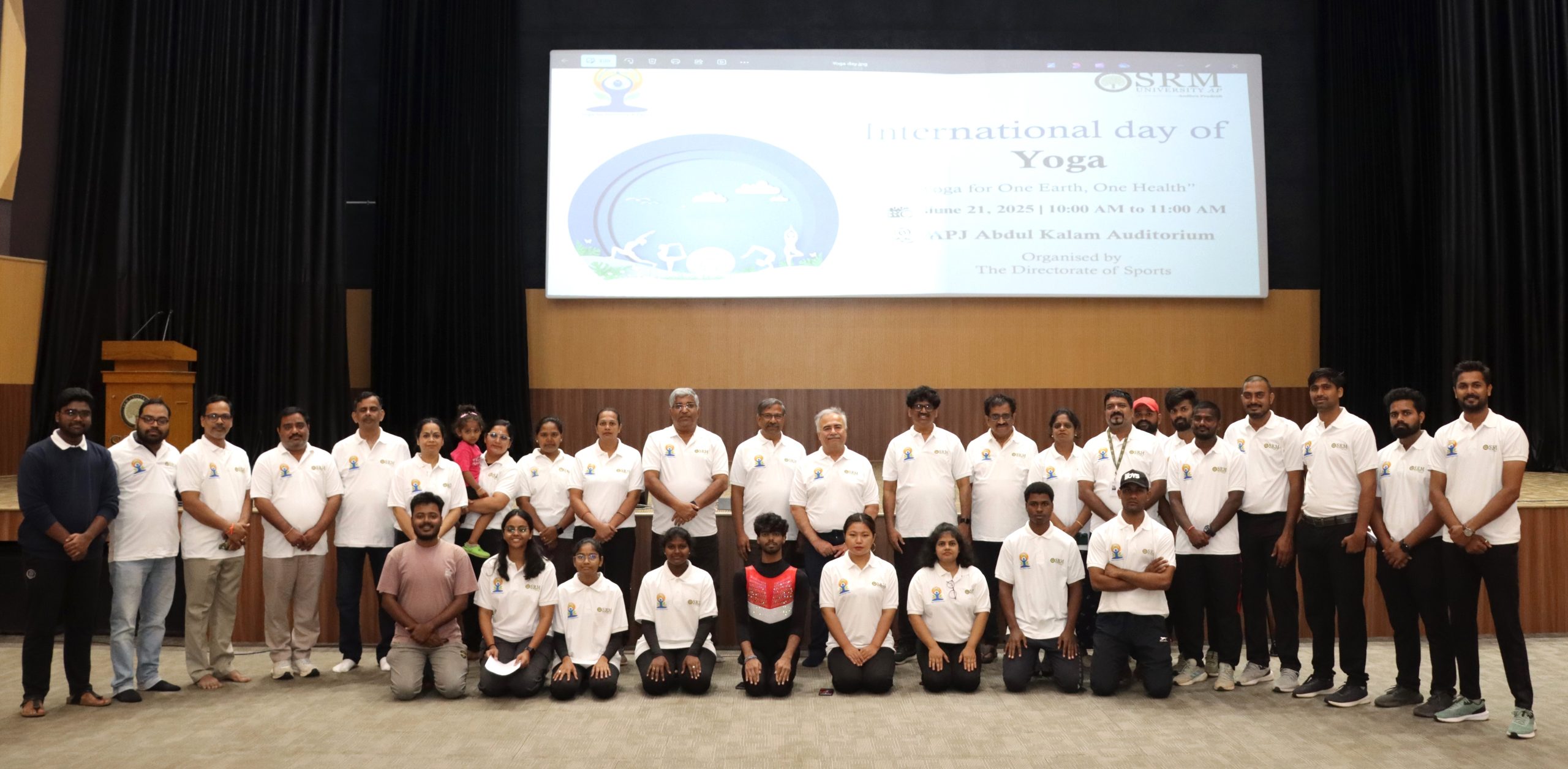
He added, “Yoga is not merely a physical exercise, it involves breathwork, emotional balance, and spiritual connection. Only when all aspects of well-being are in harmony can we live truly fulfilling lives. This alignment, in fact, is what education ultimately seeks to achieve along with intellectual and economic well-being .”
Pro Vice-Chancellor, Dr Satish Kumar, echoed this sentiment and described yoga as India’s timeless gift to the world, stressing that it should be a daily practice rather than an annual observance. “Thousands of years ago, Patanjali gifted us this profound practice. While other countries have brought different things to the world some positive, some harmful, India has given the world yoga: peace, culture, and a way of life. Even just 10 to 15 minutes of yoga daily can transform your well-being. Make it a part of your routine,” he urged.
Earlier in the day, Ms Moni also conducted yoga sessions at the Government High School in Neerukonda, where young students participated with enthusiasm. She further led yoga sessions for around 90 participants, including men and women from nearby villages, who actively engaged in the community-driven initiative.
Continue reading → - Microplastics: Hidden Drivers of Antimicrobial Resistance in Aquatic Systems June 20, 2025
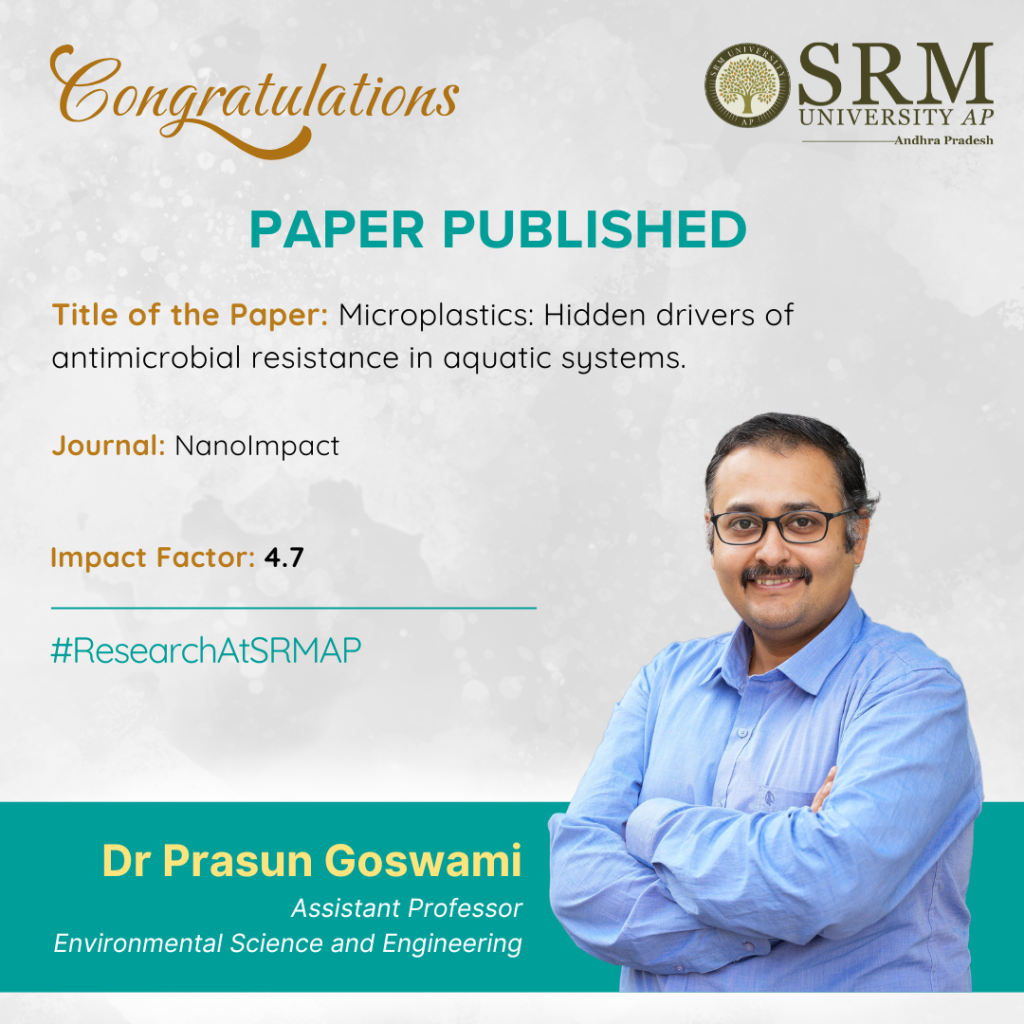
Dr Prasun Goswami, Assistant Professor from the Department of Environmental Science and Engineering, published a paper titled “Microplastics: Hidden drivers of antimicrobial resistance in aquatic systems”, in the Q1 journal, NanoImpact. His research reveals a concerning connection between microplastics and antimicrobial resistance in oceans. The study uncovers how microplastics in our oceans can harbour antibiotic-resistant pathogens, posing significant threats to marine ecosystems and human health. The paper not only sheds light on the topic but also proposes essential steps to better understand and manage the emerging threat.
Abstract
Tiny plastic particles, called microplastics, are commonly found in oceans, rivers, and lakes. These particles quickly gather layers of bacteria and other microbes, forming what scientists call the “plastisphere.” This plastisphere can carry harmful bacteria, including those that are resistant to antibiotics. Together, these plastic-based communities and the genes they carry make up what’s now being called the “Plastiome.” This review looks at how microplastics interact with bacteria and antibiotic resistance in water environments. It highlights how these plastics can collect and spread dangerous germs and genes that make infections harder to treat. The result is a growing health risk not just for marine life, but also for people. The review also points out areas where more research is needed and suggests ways to better understand and manage the spread of antibiotic resistance through plastic pollution in water.
Practical Implementation/ Social Implications of the Research
Understanding the Plastiome—the microbial life thriving on microplastics—is not just a scientific curiosity; it has real-world consequences. As these plastic particles travel through our oceans, they act as floating hubs for antibiotic-resistant bacteria, which can potentially enter the food chain via seafood or contaminate drinking water sources. The research highlights the urgent need for improved waste management, plastic use reduction, and policy frameworks to monitor microplastic pollution and its microbial cargo. By identifying how microplastics help spread antimicrobial resistance (AMR), the study can help inform public health strategies, guide marine conservation policies, and support international efforts to tackle both plastic pollution and the growing AMR crisis. In essence, tackling the Plastiome is not just about saving the oceans; it’s about protecting ecosystems, public health, and the future.
Collaborations
This work was conducted in collaboration with the National Institute of Animal Health, National Agriculture and Food Research Organization (NIAH-NARO), Tsukuba, Japan.
Future Research Plans
As part of the ongoing research, Dr Prasun explores how different plastic polymers interact with microbial communities and antibiotic resistance (AMR) genes in aquatic environments. Not all plastics behave the same—some may provide a more favourable surface for harmful microbes or facilitate the spread of resistance genes more efficiently. By understanding these polymer-specific interactions, he aims to identify which types of plastics pose the greatest environmental and public health risks. This research has important implications for designing safer materials, guiding environmental regulations, and developing strategies to curb the spread of AMR through plastic pollution in marine and freshwater ecosystems.</p
Continue reading →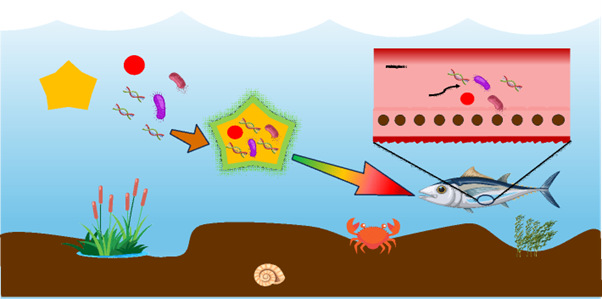
- Patent Published for Revolutionary Electrode Material in Clean Hydrogen Production June 19, 2025
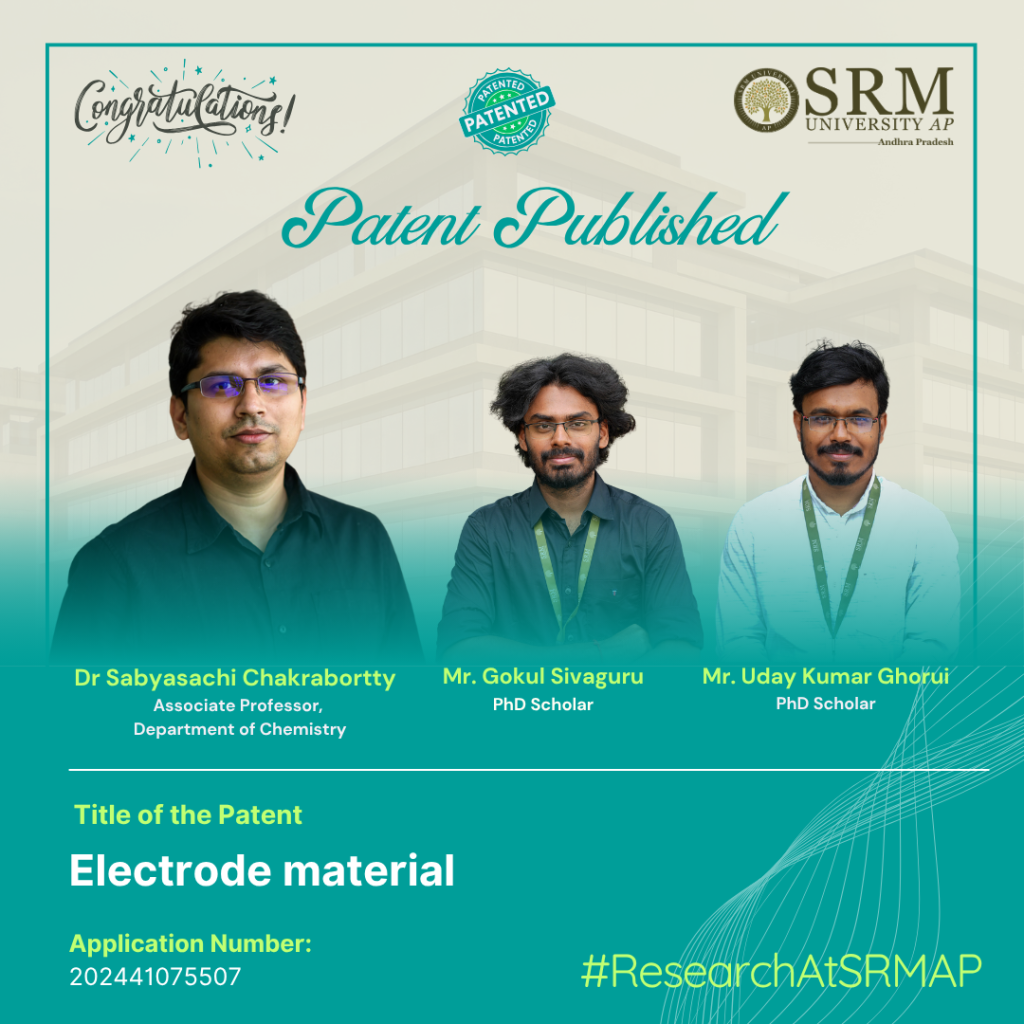
In the growing need for clean energy solutions, Dr Sabyasachi Chakrabortty, Associate Professor, Department of Chemistry, Dr Uday Kumar Ghorui (Post Doctoral Scholar) and Mr Gokul Sivaguru (PhD scholar) have filed and published the invention of “Electrode material” with Application Number: “202441075507” in the Patent Office Journal, on developing a low-cost, eco-friendly electrode material using a simple hydrothermal process. The research team has developed a pioneering Ternary Transition Metal Oxide (TTMO) nanocomposite electrode for the hydrogen evolution reaction (HER). Their work focuses on creating a sustainable alternative to fossil fuel-based hydrogen production methods, which currently generate significant CO₂ emissions.
Abstract
This disclosure focuses on developing a low-cost, earth-abundant Ternary Transition Metal Oxide (TTMO) nanocomposite electrode for efficient, clean hydrogen production, addressing the depletion of fossil fuels and the CO₂ emissions from current methods like methane reforming and coal gasification. Using a simple hydrothermal process, the TTMO electrode demonstrates excellent electrochemical HER performance, with low overpotential and 100-hour stability, despite challenges in cost, infrastructure, and safety for hydrogen energy generation.
Practical Implementation/ Social Impact of the Research
Practical Implementation
- The research develops a cost-effective TTMO nanocomposite electrode using a scalable hydrothermal method
- Enables efficient hydrogen production with low overpotential
- Offers a practical, sustainable alternative to fossil-fuel-based methods
- Achieves 100 hours of stable hydrogen generation while minimizing CO₂ emissions
- Enables efficient hydrogen production with low overpotential
Social Implications
- Addresses the critical need for clean, renewable energy sources
- Provides a sustainable solution for hydrogen production without carbon emissions
- Makes green hydrogen technology more accessible through cost-effective materials
- Contributes to global efforts in reducing dependence on fossil fuels
Future Research Plans
- Optimising the TTMO nanocomposite’s composition and synthesis to boost HER efficiency
- Improving stability for industrial-scale hydrogen production
- Exploring integration into real-world energy systems
- Investigating other earth-abundant materials to advance affordable, green hydrogen technologies
- “Class and Inequality in China and India” Talk by Prof. Vamsi Vakulabharanam June 18, 2025
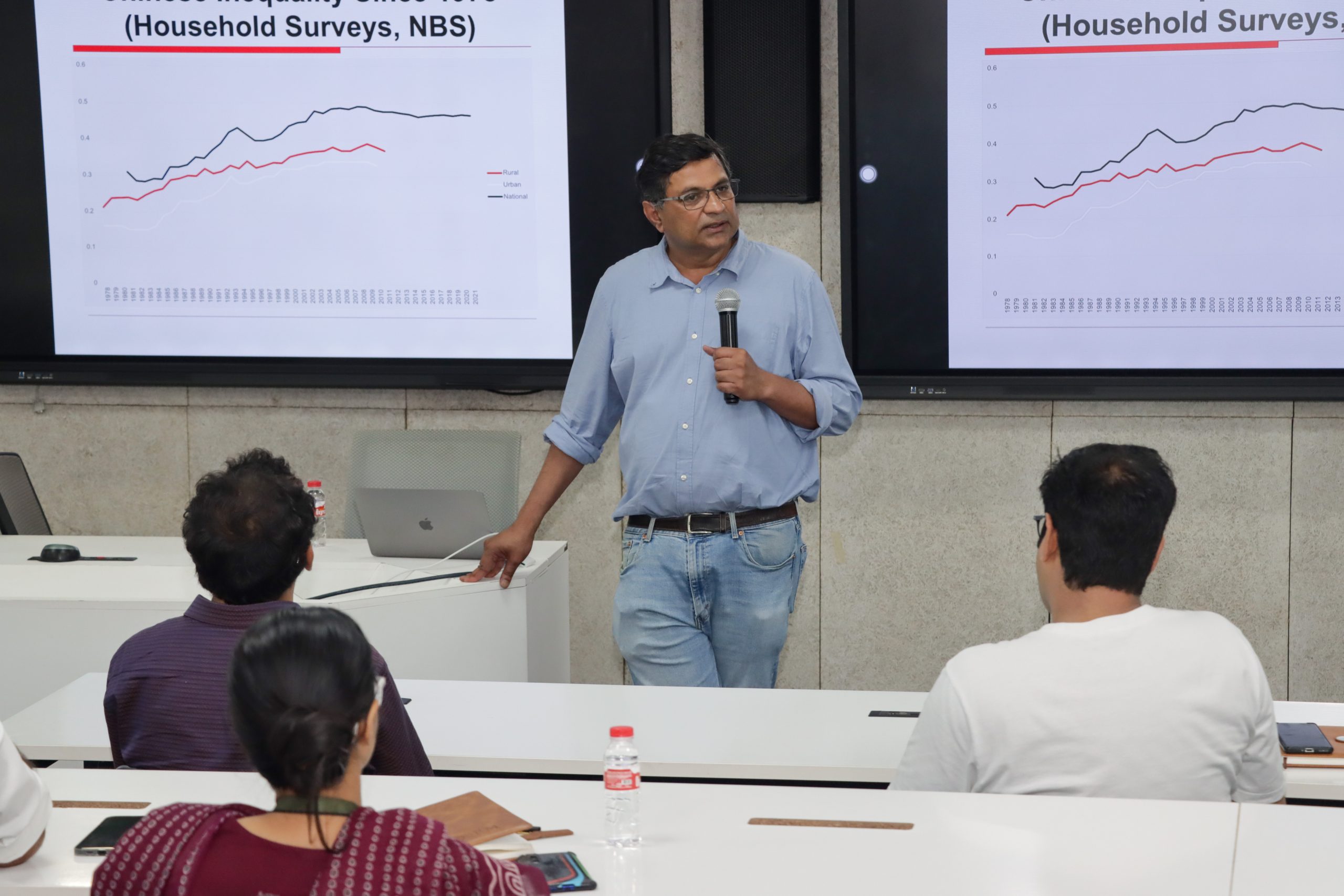 The Department of Economics hosted a talk titled “Class and Inequality in China and India” by Prof. Vamsi Vakulabharanam, Associate Professor of Economics at the University of Massachusetts Amherst on June 17th. Prof. Vakulabharanam, a former faculty member at the University of Hyderabad and City University of New York, has been associated with research institutions such as the Institute for New Economic Thinking (INET) and the India China Institute. He is a renowned scholar in the field of political economy, inequality and development studies with a focus on India, global capitalism and class-caste dynamics.
The Department of Economics hosted a talk titled “Class and Inequality in China and India” by Prof. Vamsi Vakulabharanam, Associate Professor of Economics at the University of Massachusetts Amherst on June 17th. Prof. Vakulabharanam, a former faculty member at the University of Hyderabad and City University of New York, has been associated with research institutions such as the Institute for New Economic Thinking (INET) and the India China Institute. He is a renowned scholar in the field of political economy, inequality and development studies with a focus on India, global capitalism and class-caste dynamics.In his talk, Prof. Vakulabharanam presented key ideas from his recent book Class and Inequality in India (1950–2010), offering a comparative political economy perspective on India and China. His lecture offered critical comparative insights into the evolution of class structures and inequalities in China and India, two of the world’s largest emerging economies.
Drawing on empirical evidence and theoretical perspectives, the speaker examined the socio- economic trajectories of both countries and highlighted the implications of rising disparities for long- term development and social stability. He traced two distinct phases in the post-independence period:1950–1980, marked by low economic growth but a decline in inequality (forming the lower part of a U-shape), and 1980–2010, characterised by rapid growth under neoliberal reforms and policies but a simultaneous rise in inequality.
The lecture highlighted three main contributions of the book:
- A class-based analysis of inequality, especially novel in the context of China.
- An exploration of how India and China have transformed the world economy post-1950, and how global economic dynamics have, in turn, reshaped these countries.
- A theoretical framework for understanding within-country inequality.
Prof. Vakulabharanam also engaged with frameworks such as varieties of capitalism, French regulation theory, and comparative urban inequality (e.g., urban Gini coefficient analysis in Beijing and Delhi), offering a nuanced critique on ideas from thinkers like Thomas Piketty and Simon Kuznets and of global inequality discourse.
Concluding his talk, Prof. Vakulabharanam emphasised, “If China and India genuinely want to add something novel to the world order, they have to break free from the European model and find their own way of addressing inequality, climate change, and technological innovation.”
The session witnessed active participation from faculty members and research scholars from the Easwari School. Followed by a lively Q&A session, engaging participants in discussions around development policy, economic reforms, and the political economy of inequality. This academic event marked a valuable opportunity for the university community to interact with an international expert and gain deeper understanding of comparative development challenges in Asia.
Continue reading → - Uniting Forces, Leveraging Synergy: SRM AP Join Hands with Vishnu Group June 17, 2025
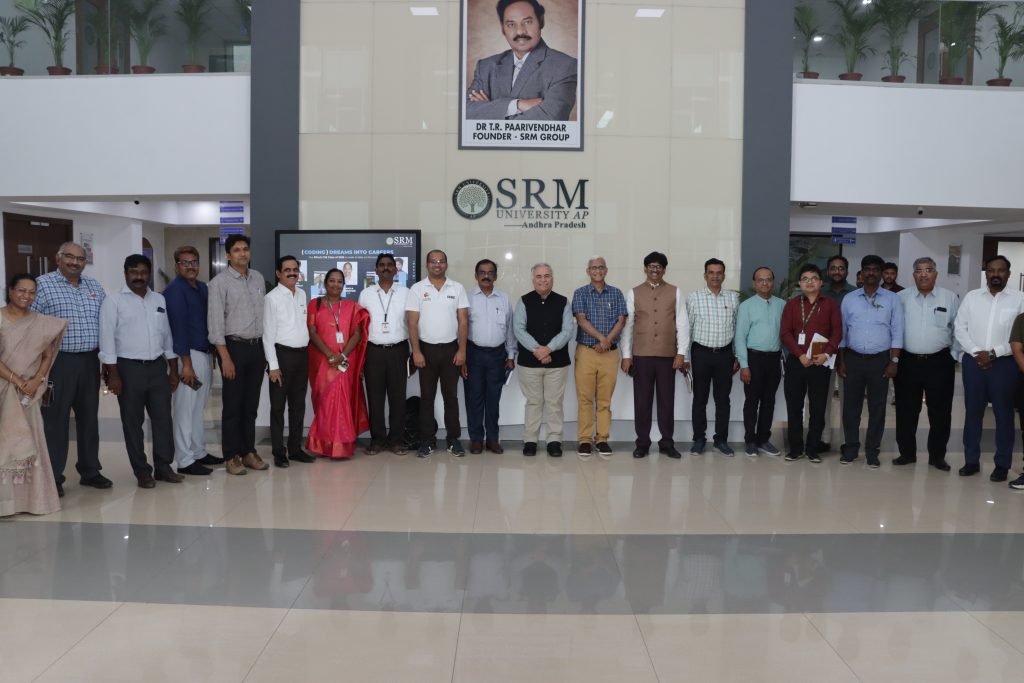
Vishnu Group of Institutions, a prominent name in the educational society in the West Godavari District of Andhra Pradesh visited SRM University-AP, exploring for a collaboration across multiple domains.
The Vishnu Group of Institutions presently comprises nine constituent colleges, serving over 20,000 students across a diverse range of programs, including Engineering, Dental Studies, Pharmacy, BSc, MCA, Polytechnic, and K-12 education. The Group operates with a profound sense of purpose and unwavering commitment, dedicated to fostering engaging learning experiences in the rural regions of Andhra Pradesh and Telangana.
The event saw the presence of SRM University-AP‘s Vice Chancellor, Prof. Manoj K Arora; Pro-Vice Chancellor, Prof. Ch Satish Kumar; Dean-SEAS, Prof. C V Tomy; Dean -Research, Prof. Ranjit Thapa, among other members of the faculty and Staff, alongside the staff and faculty from Vishnu Group of Institutions.
On the occasion, Vice Chancellor Prof. Manoj K Arora outlined the university’s growth trajectory, stating that the faculty has been a key factor contributing to the varsity’s success. Our faculty has been hired from some of the most-premier institutions of the country and world, fostering a multi-cultural nucleus of learning. “We, as a university, place a lot of emphasis on faculty and their training.” He also stressed the need to advocate for knowledge dissemination.
Prof. Arora highlighted the incredible support that the SRM University Management exerts towards fortifying the research acumen, and the SEED Grant is one such instance. Speaking of the Research prowess of the varsity, Prof. Arora also stated that the research at the varsity is predominantly interdisciplinary in nature. He echoed the words of the Pro-Chancellor, who believes – “Think Big, Do Big” thereby emphasising the importance of learning over teaching.
Prof. Arora also mentioned the landmark collaboration with Carnegie Mellon University. “Our ambitions are high; we will continue to grow,” stated the Vice Chancellor. Speaking on the occasion, the Pro-Vice-Chancellor, Prof. Ch Satish Kumar, added, “At SRM University-AP, we don’t just encourage the faculty but also the students to focus on Research.” He also quoted the NEP, stating the emphasis the policy places on student-based research at all levels of learning.
Prof. Satish cited the old education system, which was based on the concepts of ‘Bhay’ and ‘Bhakti’ (fear and devotion) towards teachers. He stated, “today, the education system cannot run on this ideology. The present system requires us to mentor the students, eliminating the concepts of ‘Bhay’ (fear towards teachers) Mentoring is the key to our system of teaching and learning here at SRM University-AP.”
The event also witnessed Deans and Directors briefing the delegation from Vishnu Group of Institutions on the functioning of the various Departments and Directorates at SRM AP.
Continue reading → - Chetna 2.0: Awakening Mathematical Minds June 17, 2025
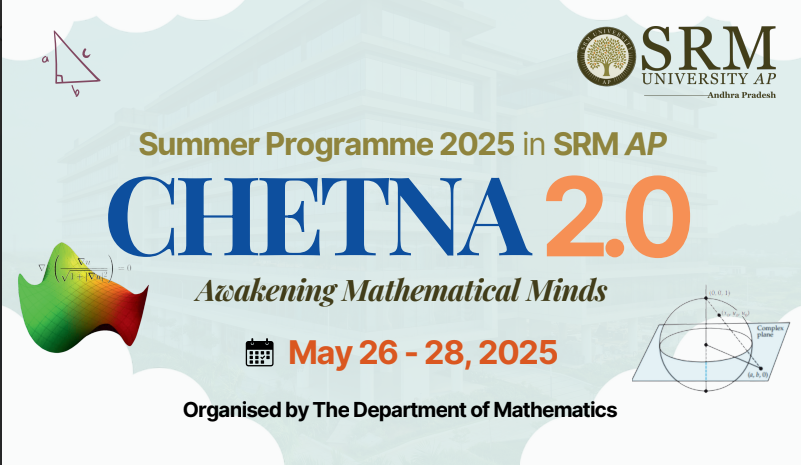 The Department of Mathematics at SRM University-AP, Amaravati, successfully conducted a three-day summer programme, Chetna 2.0: Awakening Mathematical Minds, from May 26th to May 28th, 2025. The programme aimed to inspire and deepen mathematical understanding among students nationwide. A total of 84 enthusiastic participants joined from various states, including Madhya Pradesh, Kerala, Tamil Nadu, Maharashtra, and Andhra Pradesh.
The Department of Mathematics at SRM University-AP, Amaravati, successfully conducted a three-day summer programme, Chetna 2.0: Awakening Mathematical Minds, from May 26th to May 28th, 2025. The programme aimed to inspire and deepen mathematical understanding among students nationwide. A total of 84 enthusiastic participants joined from various states, including Madhya Pradesh, Kerala, Tamil Nadu, Maharashtra, and Andhra Pradesh.The curriculum was thoughtfully designed to cover a broad spectrum of mathematical topics. Faculty members from the Department of Mathematics led sessions on various subjects, offering a rich and engaging learning experience that ignited a more profound passion for mathematics among the attendees.
Varadha from Kerala shared, “I was able to build on my knowledge from my BSc and learn entirely new concepts. Each faculty member brought their own unique teaching style, which helped boost our confidence, curiosity, and understanding.”
Dr Kalyan Banerjee, Assistant Professor in the Department of Mathematics, noted, “At SRM-AP, we have a thriving mathematics department. We hope that during this three-day programme, students will gain valuable insights from our faculty and be introduced to advanced concepts in higher mathematics such as geo-mathematics, applied mathematics, and data science—all trending areas in today’s mathematical landscape. We aim to highlight mathematics’s crucial role in science and technology.”
Speakers List
Prof. Kalyan Chakraborty
Dr Shilpa Garai
Dr Krishanu Roy
Dr Vijayakrishna Rowthu
Dr Animesh Bhandari
Dr Kalyan Banerjee
Dr Priyabrata Mandal
Dr Prakash Chandra
Dr Jayasree Subramanian
Conclusion:
Chetna 2.0: Awakening Mathematical Minds was a resounding success, offering students valuable knowledge and a deeper appreciation for mathematics. The blend of participants from diverse backgrounds and the expertise of the faculty created a dynamic and stimulating environment. The Department of Mathematics at SRM University-AP looks forward to hosting similar initiatives in the future to continue nurturing young mathematical talent across the nation.
Continue reading → - Discover India: Keio University Delegates Explore Indian Culture June 17, 2025
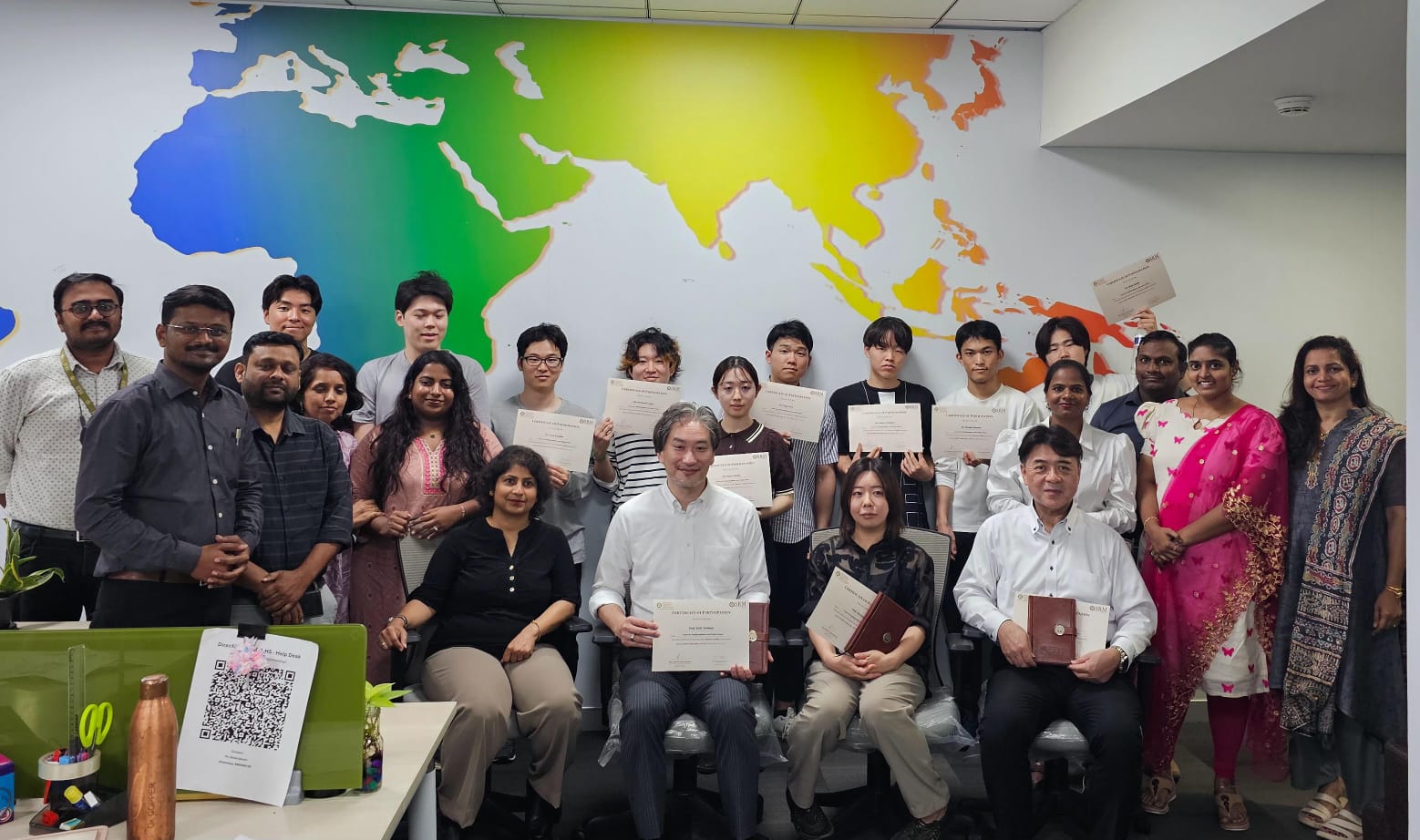 The Directorate of International Relations & Higher Studies (IR&HS) welcomed the students and faculty from Keio University and Forum Engineering, Japan, for the “Discover India 2025” programme.
The Directorate of International Relations & Higher Studies (IR&HS) welcomed the students and faculty from Keio University and Forum Engineering, Japan, for the “Discover India 2025” programme.Inaugurated by the Vice Chancellor, Prof. Manoj K Arora in the presence of Dean – School of Engineering and Sciences, Prof. C V Tomy, alongside Dean – Easwari School of Liberal Arts, Prof. Vishnupad; Assistant Dean-Research, Dr Mahesh Kumar Ravva; and Assistant Professor-Department of Civil Engineering, Dr Pranav R T Peddinti, among others. “Discover India 2025” is a flagship initiative of the university to promote India’s cultural and knowledge traditions.
Mr Lakshmi Narasimhan, Director and Dr Sudeshna Saha, Assistant Director of International Relations and Higher Studies, received the international students at the grand inaugural ceremony. Students participated in various short courses on Research Area Introduction, Mechanical Engineering Labs and Centre Visits at Electronic Cooling & Gold Centre. Presentations on Robotics, Additive Manufacturing & Bio Printing Materials. Keio University professors and students interacted with PhD Research Scholars and faculty from the Deaprtment of Mechanical Engineering regarding their projects and other research works.
Talks on various mobility programmes, including Student and Faculty Exchange, Transfer Programmes, Joint Research initiatives, and opportunities for mutual collaboration between Keio University and SRM University AP were held. An interactive session was organised for Destination Japan students currently learning Japanese at SRM University-AP, supported by SRM Global. Professors Miki Norihisa & Prof. Hasegawa AI delivered an engaging presentation on Keio University, highlighting the job and internship opportunities in Japan. The session provided a platform for Destination Japan students to interact with peers learning Japanese. Over 52 students actively participated, making the event a resounding success.
As part of the 3-day “Discover India” programme, SRM University-AP organised an industrial visit to Tech Mahindra in Vijayawada, on March 20, 2025. A total of 15 participants, including professors, staff, and students from Keio University, Forum Engineering, and SRM University-AP, attended.
The Japanese delegation had an enriching experience, interacting with Tech Mahindra Operation team and the Head of Training and Recruitment team. Participants visited landmark locations such as the Dhyana Buddha statue, Amaravati Temple and the Kanaka Durga Temple in Vijayawada, deepening their appreciation of Indian culture.
Continue reading → - Teacher-Student Duo Research on Dark Matter Model June 16, 2025
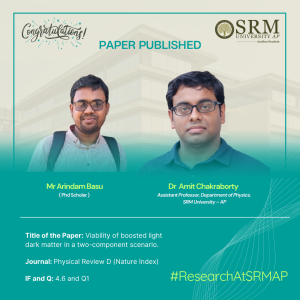 As a significant contribution to science, Assistant Professor Dr Amit Chakroborty and his Doctoral Scholar, Arindam Basu, from the Department of Physics have published a groundbreaking paper titled, Viability of boosted light dark matter in a two-component scenario in the Physics Review D (Nature Index ) Journal. The research explores a two-component dark matter model and addresses the theoretical challenges in hopes of improving our understanding and painting a complete picture of dark matter.
As a significant contribution to science, Assistant Professor Dr Amit Chakroborty and his Doctoral Scholar, Arindam Basu, from the Department of Physics have published a groundbreaking paper titled, Viability of boosted light dark matter in a two-component scenario in the Physics Review D (Nature Index ) Journal. The research explores a two-component dark matter model and addresses the theoretical challenges in hopes of improving our understanding and painting a complete picture of dark matter.Abstract
We study the boosted dark matter (BDM) scenario in a two-component model. We consider a neutrinophilic two-Higgs doublet model (ν2HDM), which consists of one extra Higgs doublet and a light right-handed neutrino. This model is extended with a light (∼ 10 MeV) singlet scalar DM ϕ3, which is stabilized under an extra dark ZDM symmetry and can only effectively annihilate through the CP even scalar H. Although the presence of a light scalar H modify the oblique parameters to put tight constraints on the model, the introduction of vectorlike leptons (VLL) can potentially salvage the issue. The vectorlike doublet N and singlet χ are also stabilized through dark ZDM symmetry. The lightest vectorlike mass eigenstate (χ1 ∼ 100 GeV) is the second DM component of the model. Individual scalar and fermionic DM candidates have Higgs/Z mediated annihilation, restricting the fermion DM in a narrow mass region while a somewhat broader mass region is allowed for the scalar DM. However, when two DM sectors are coupled, the annihilation channel χ1χ1 → ϕ3ϕ3 opens up. As a result, the fermionic relic density decreases, and paves way for broader fermionic DM mass region with under-abundant relic: a region of [30 − 65] GeV compared to a narrower [40 − 50] GeV window for the single component case. On the other hand, the light DM ϕ3 acquires significant boost from the annihilation of χ1, causing a dilution in the resonant annihilation of ϕ3. This in turn increases the scalar DM relic, allowing for a smaller mass region compared to the individual case. The exact and underabundant relic is achievable in a significant parameter space of the two-component model where the total DM relic is mainly dominated by the fermionic DM contribution. The scalar DM is found to be sub-dominant or equally dominant
Practical Implementation/ Social Implications of the Research:
This research explores a new idea in the search for dark matter, the invisible substance that makes up most of the matter in our universe. Instead of assuming dark matter is made of just one kind of particle, this study investigates a two-component model, where a heavier dark matter particle can decay or interact to produce a lighter, faster one. These “boosted” light dark matter particles could leave detectable traces in experiments here on Earth. The study carefully examines how this model fits with current cosmological observations and what conditions are needed for it to work.
While the work is theoretical, it has strong practical implications: it can guide ongoing and future experiments in detecting dark matter more effectively. Understanding dark matter is one of the most important unsolved problems in physics, and progress here could lead to understanding more about the picture of the universe. In the broader sense, such deep-space research inspires innovation, sharpens technology, and fuels curiosity-driven science that ultimately benefits society.
Collaborations:
This work has been done in collaboration with Mr Arindam Basu, PhD Scholar, the Department of Physics, SRM University-AP.
Future Research Plans:
- Study of the Dark Matter Direct Detection prospects.
- Study of the Dark Matter Indirect Detection prospects.
- Searching new physics at energy frontier.


